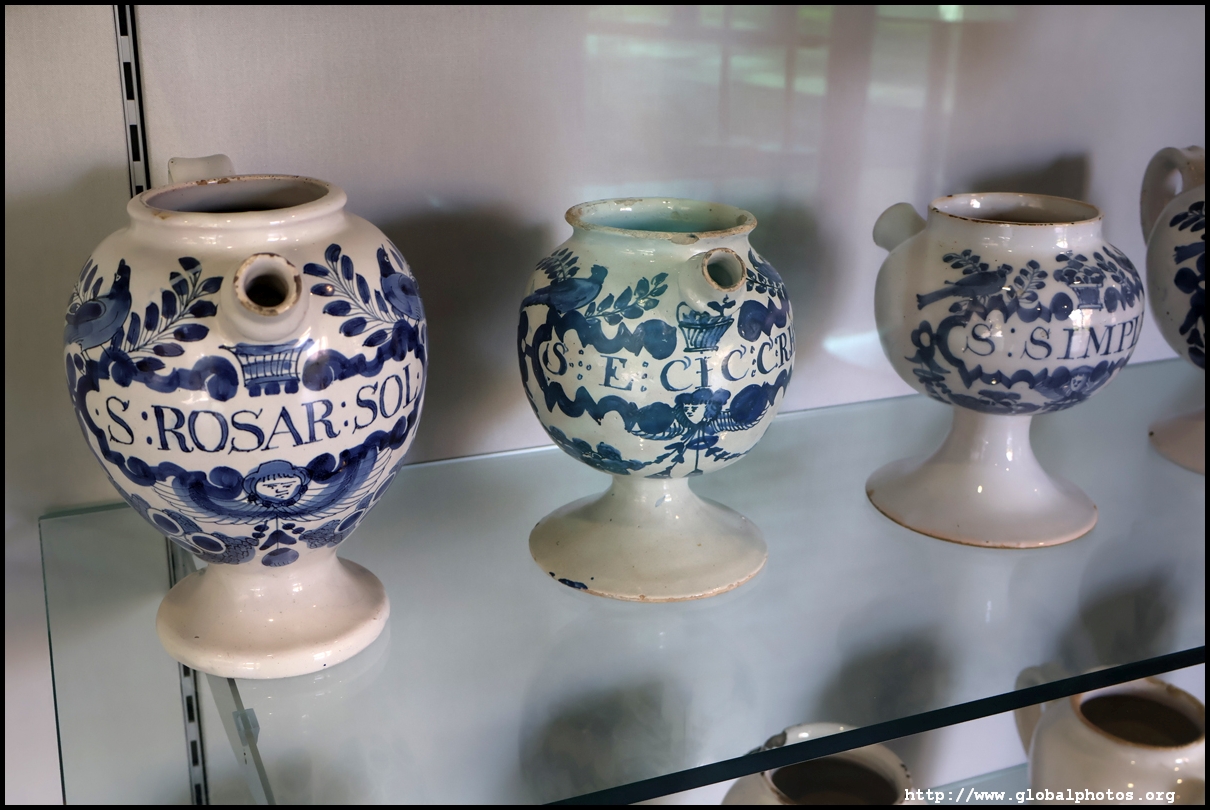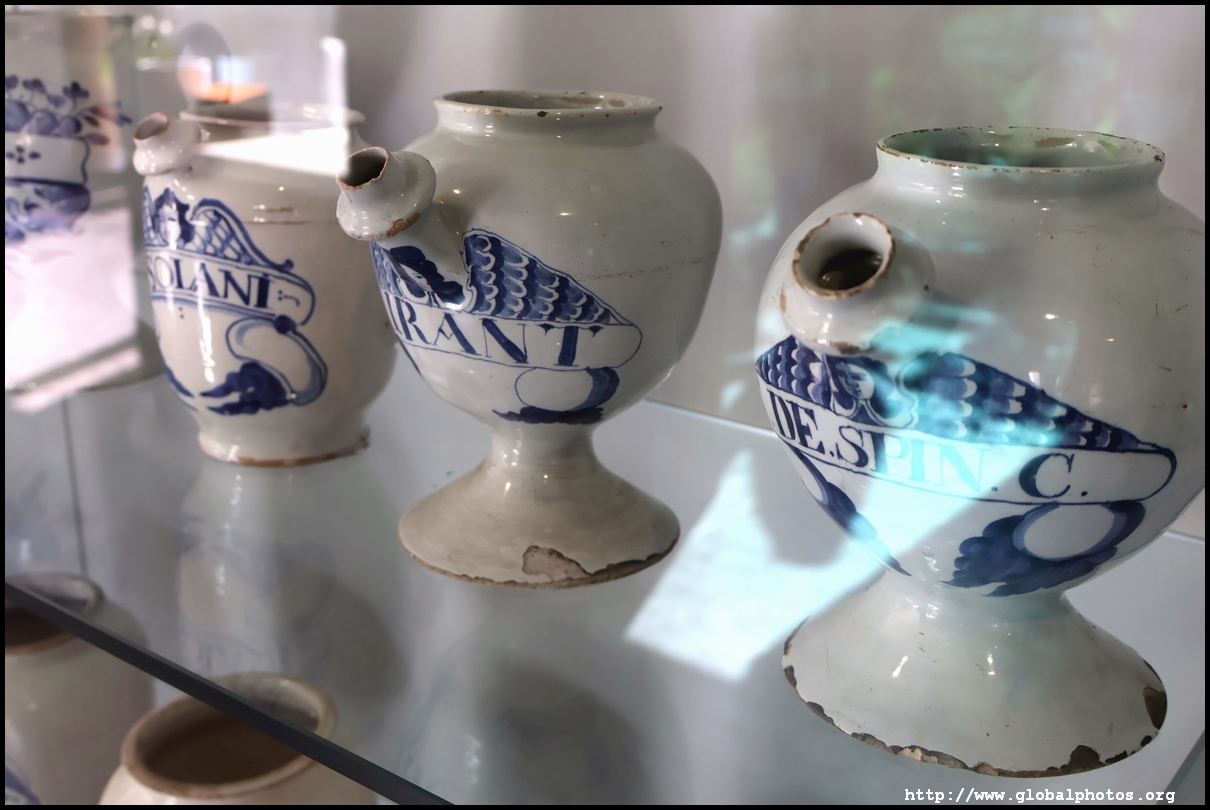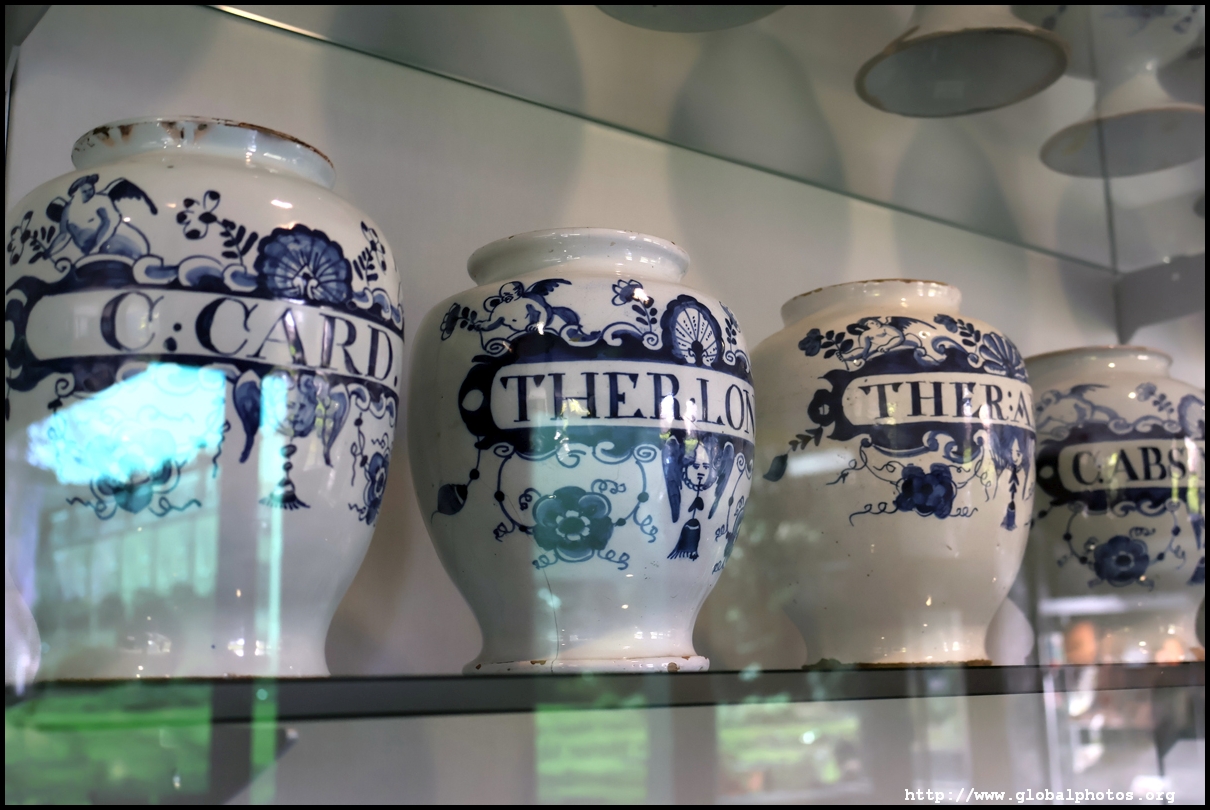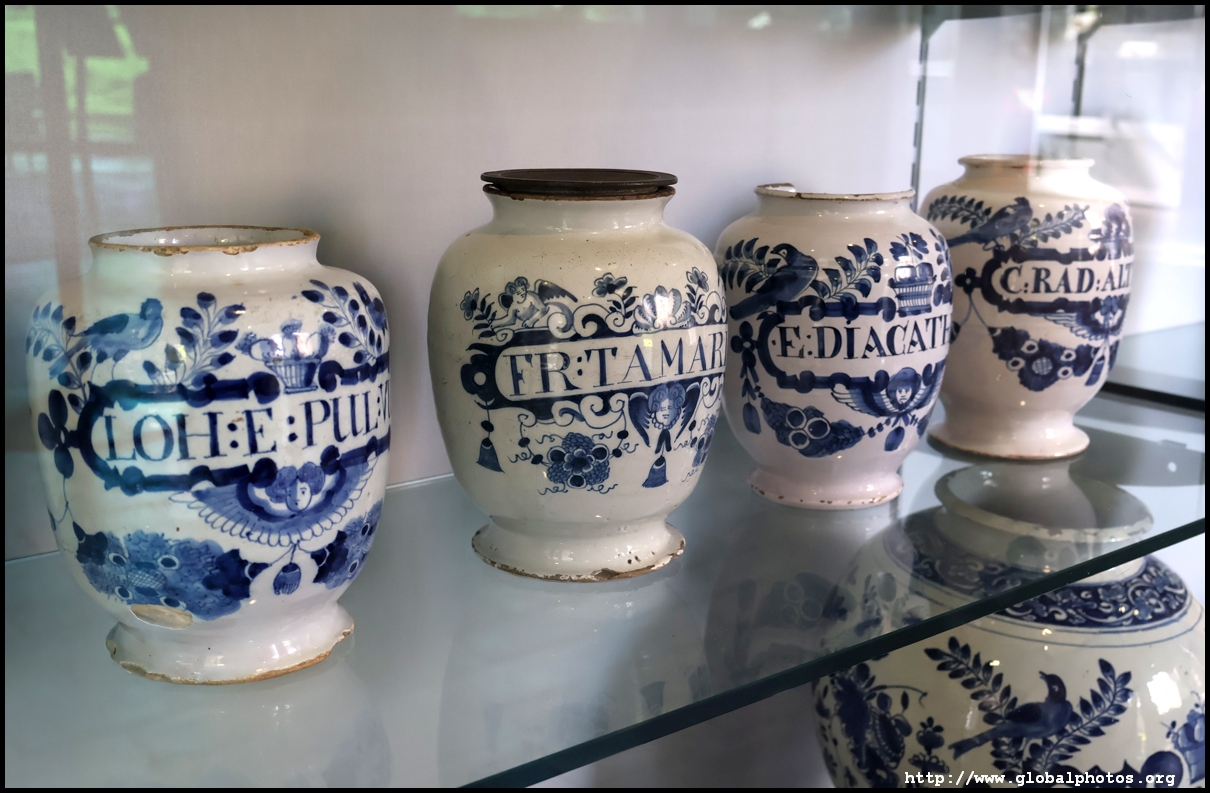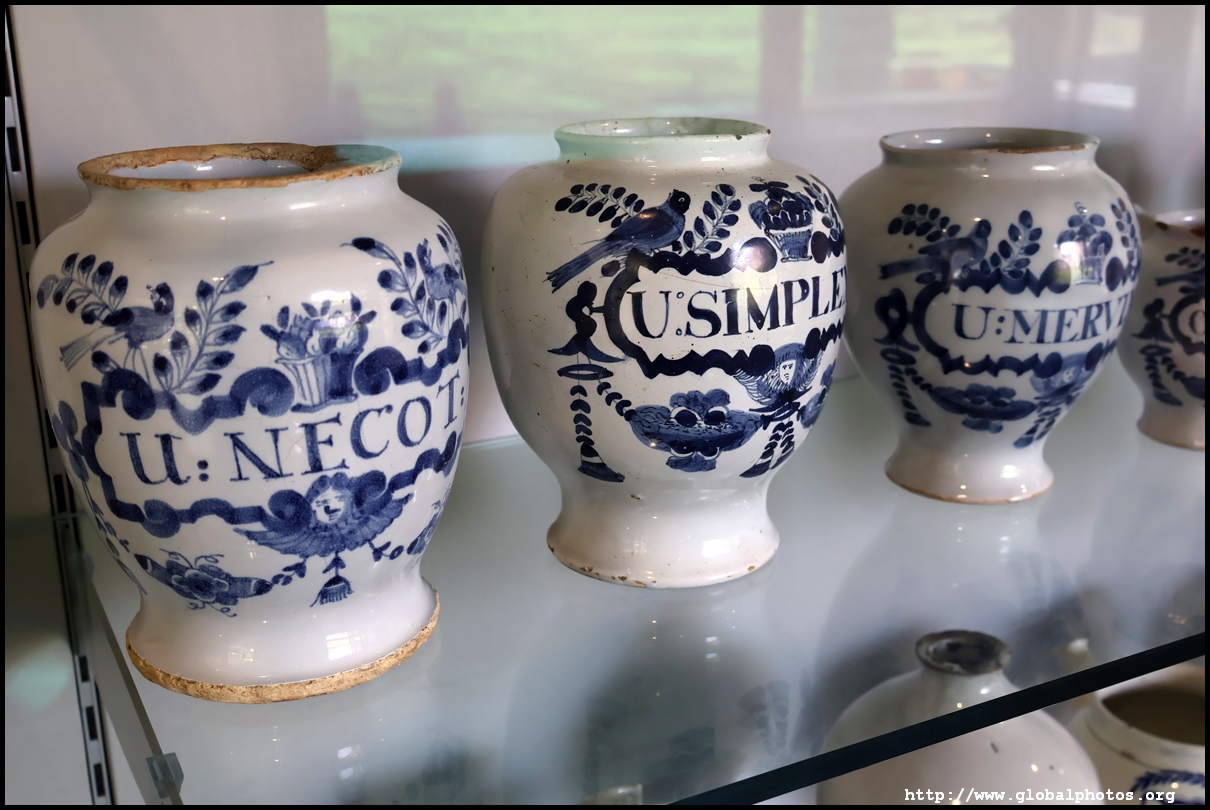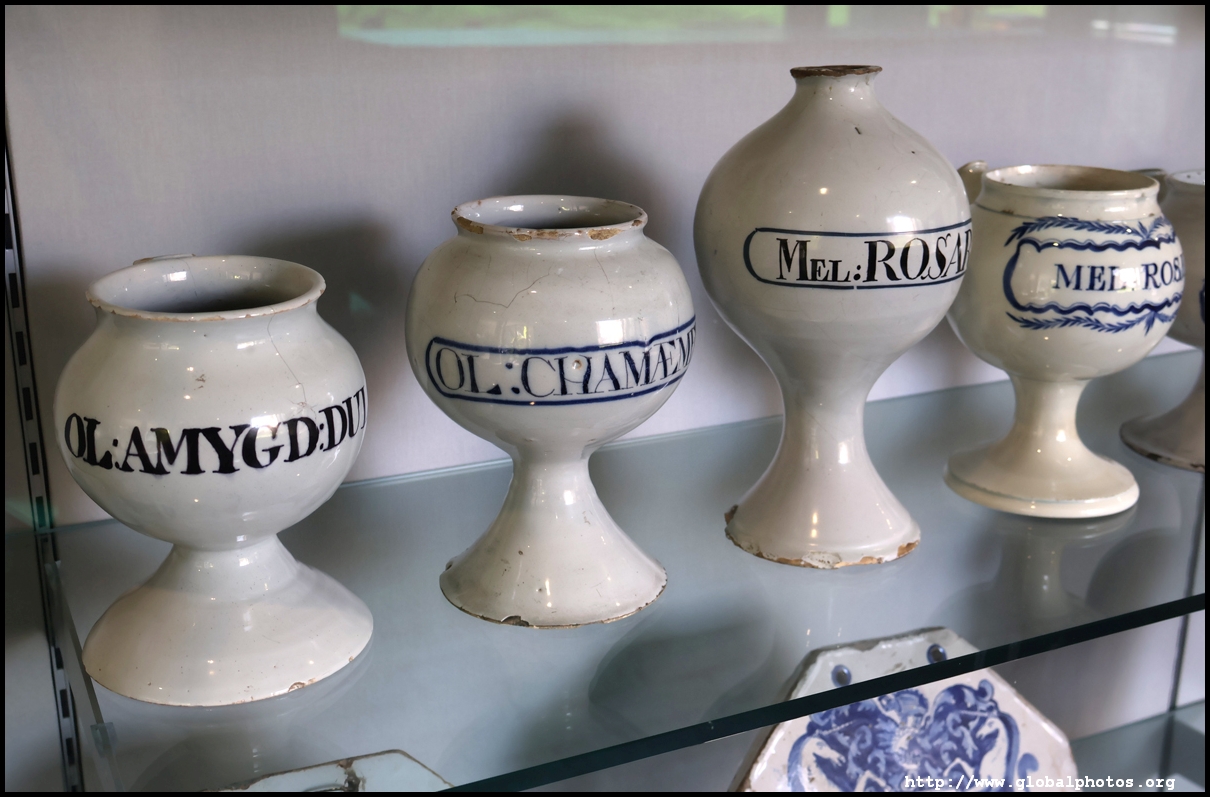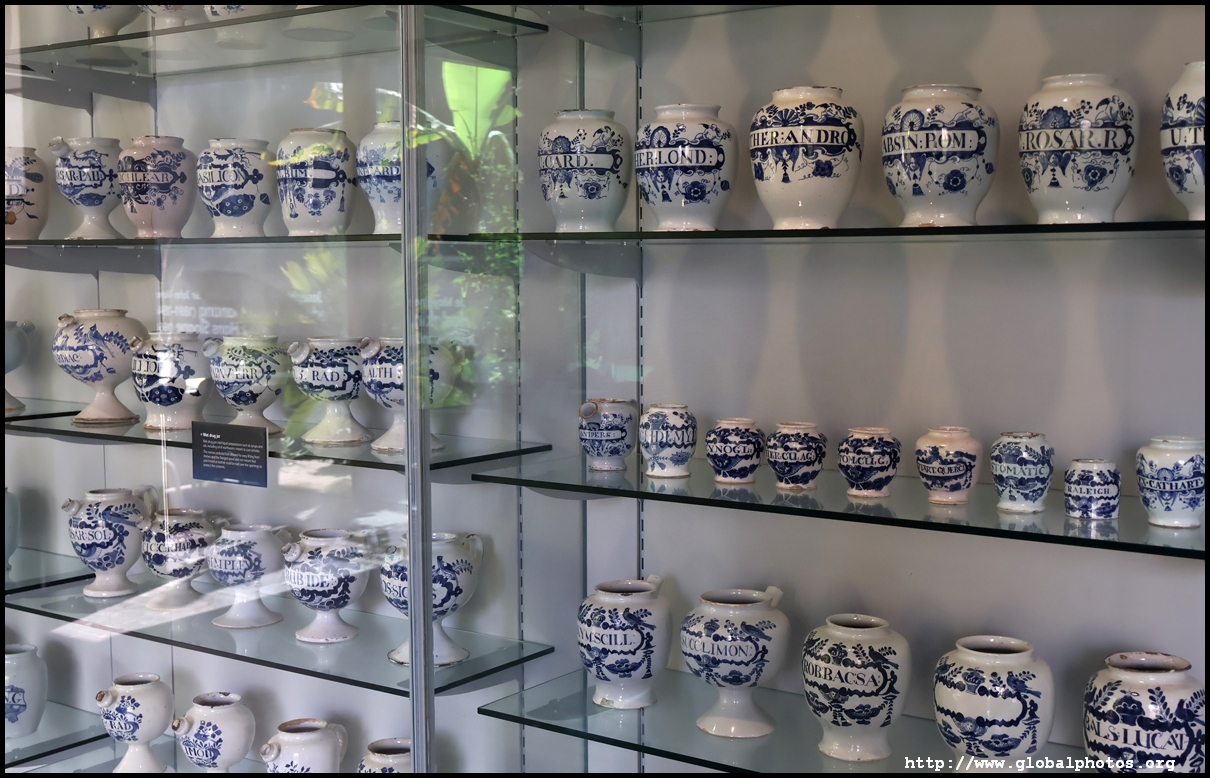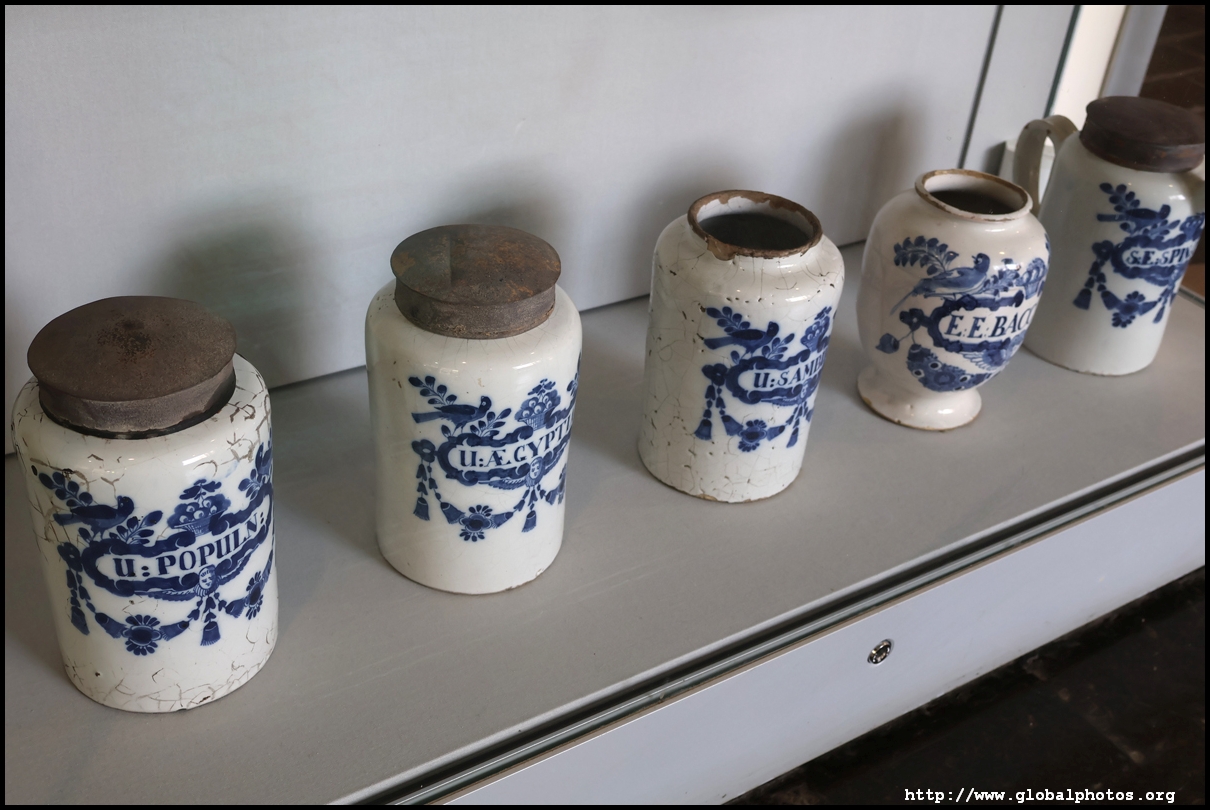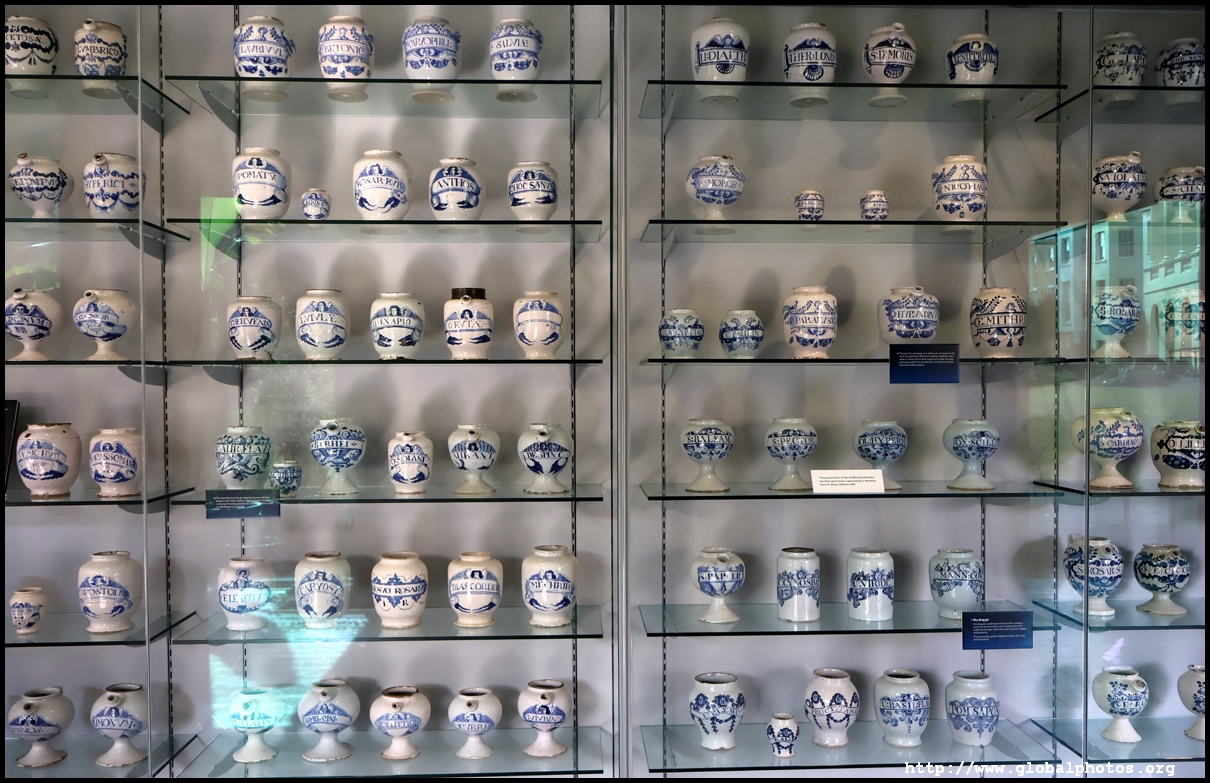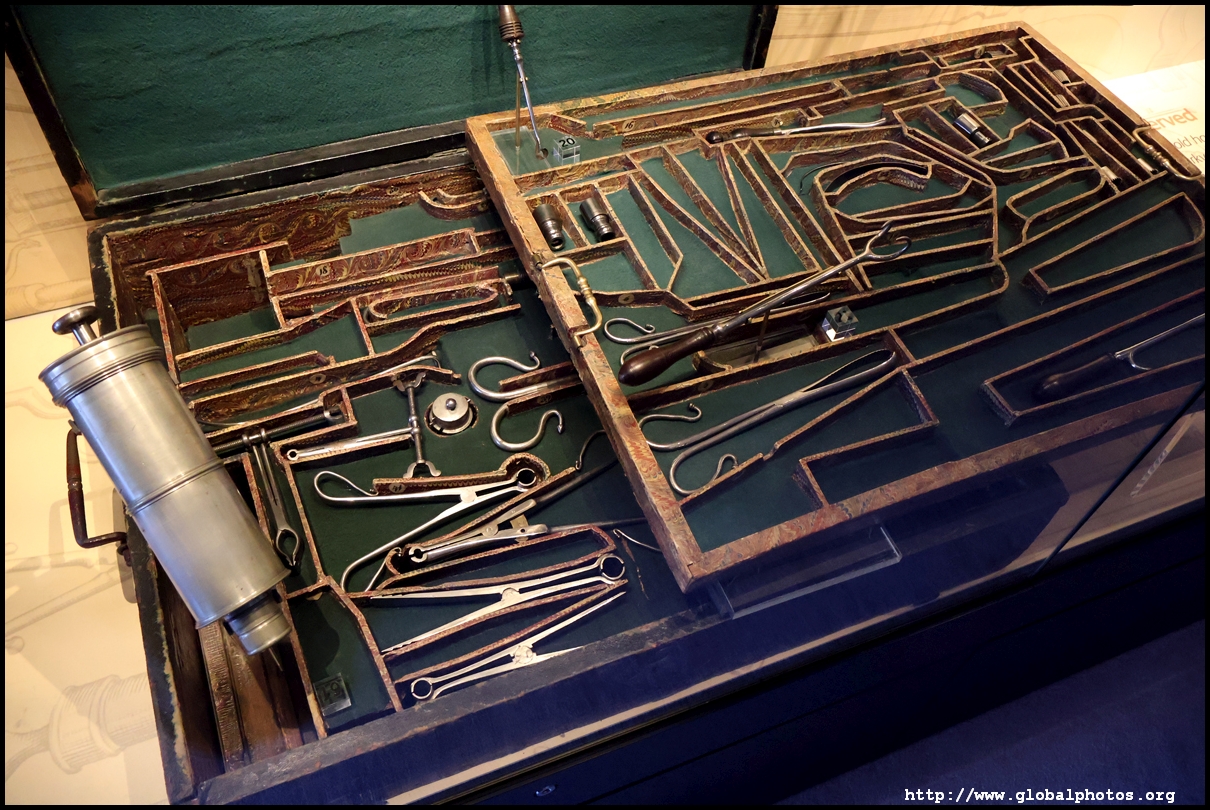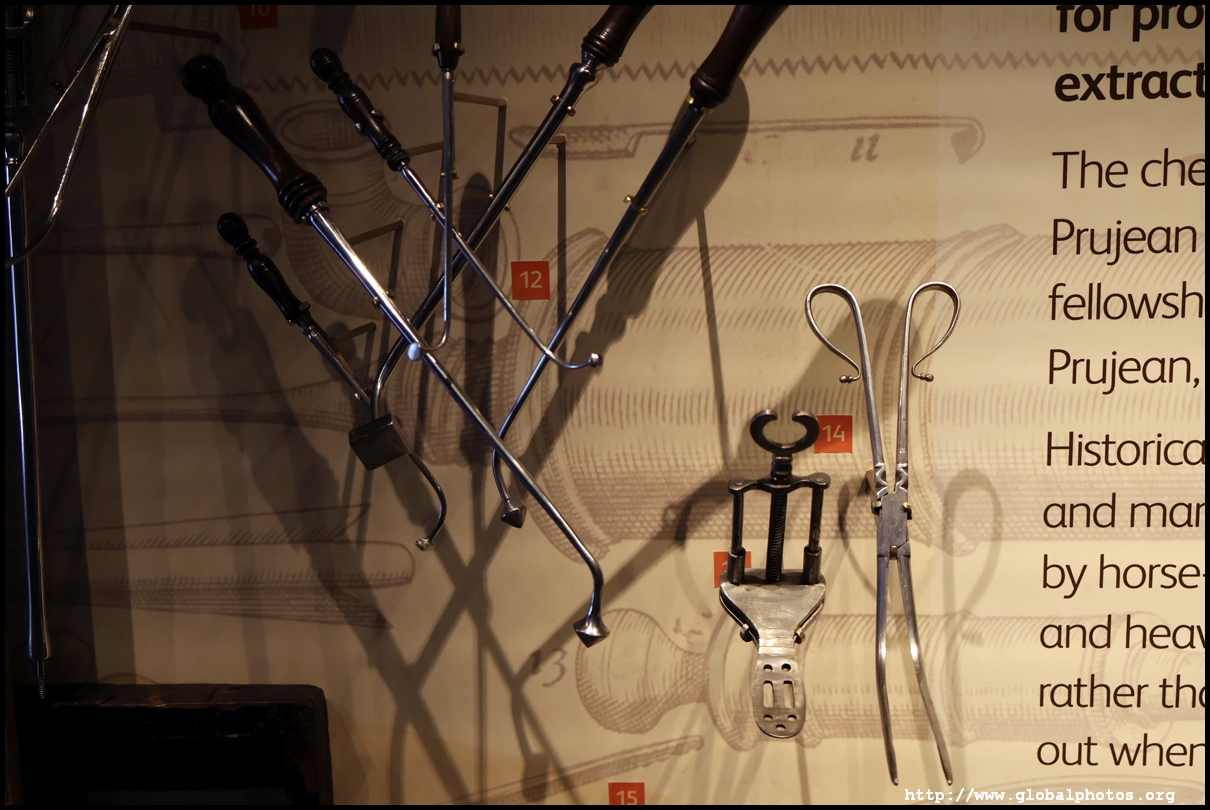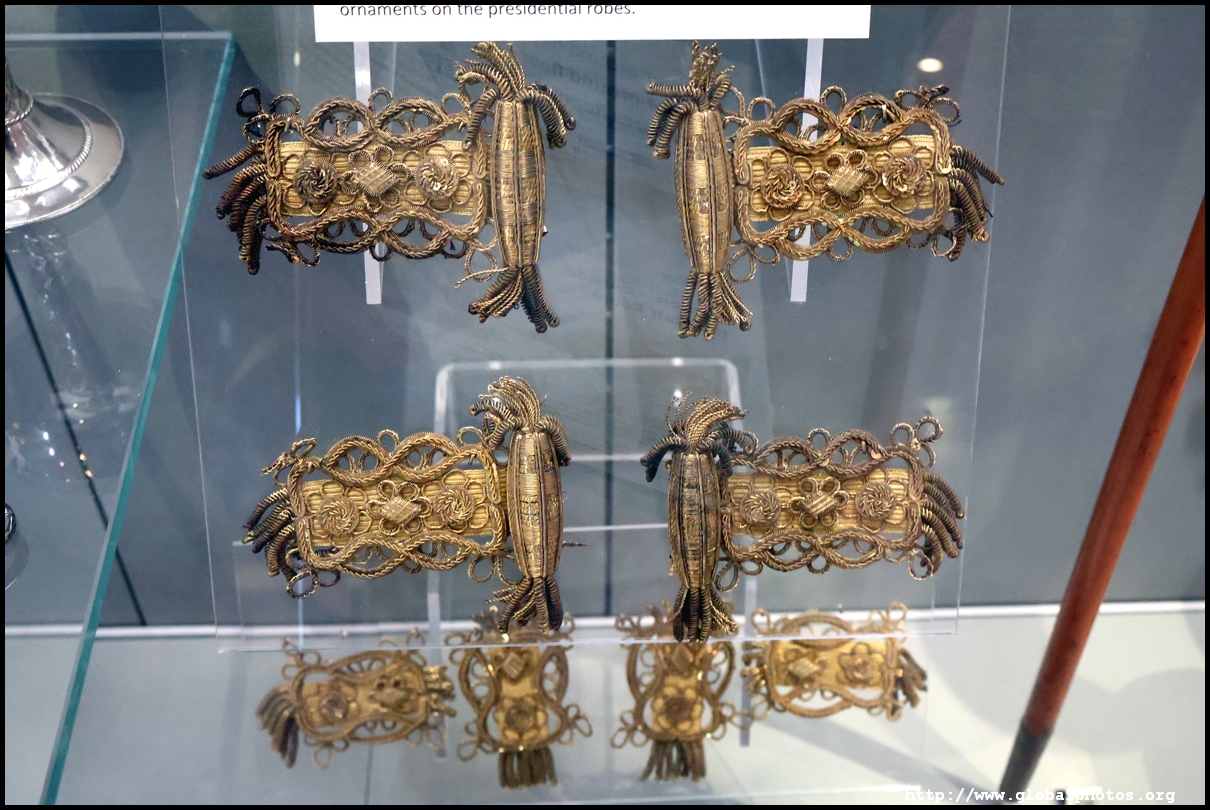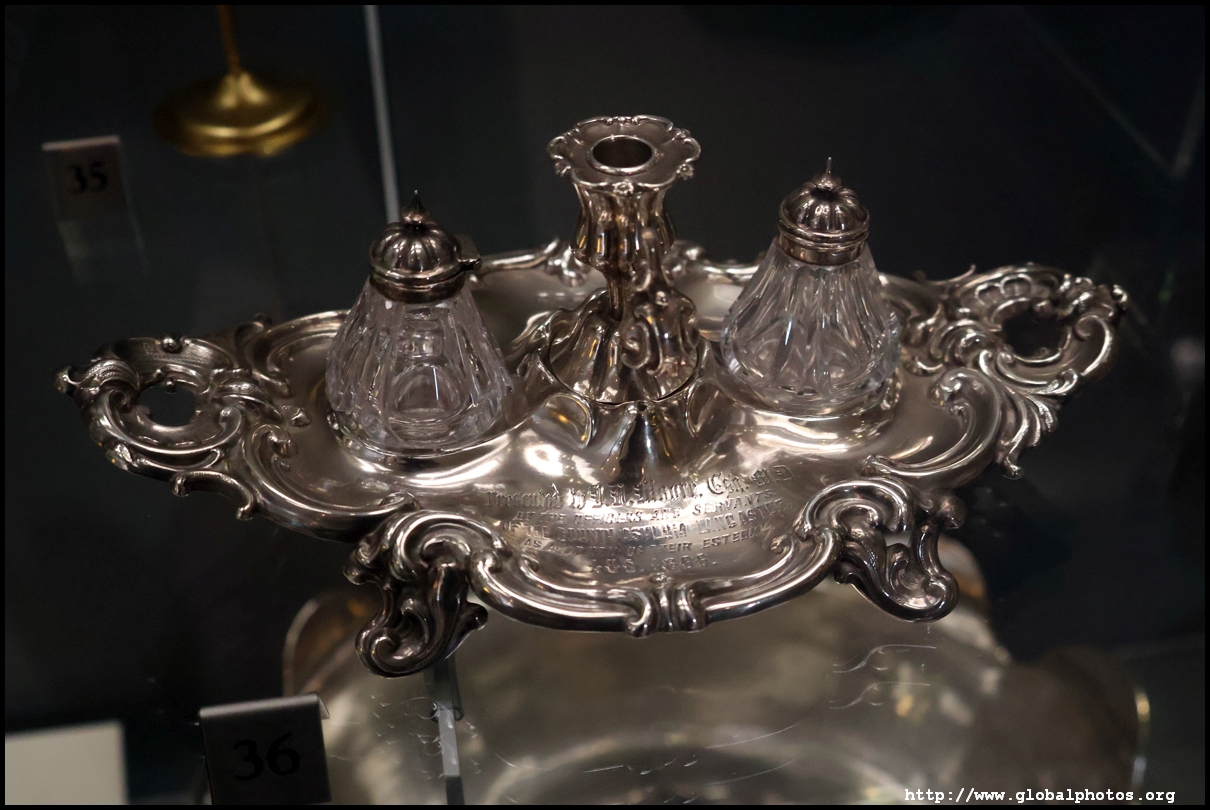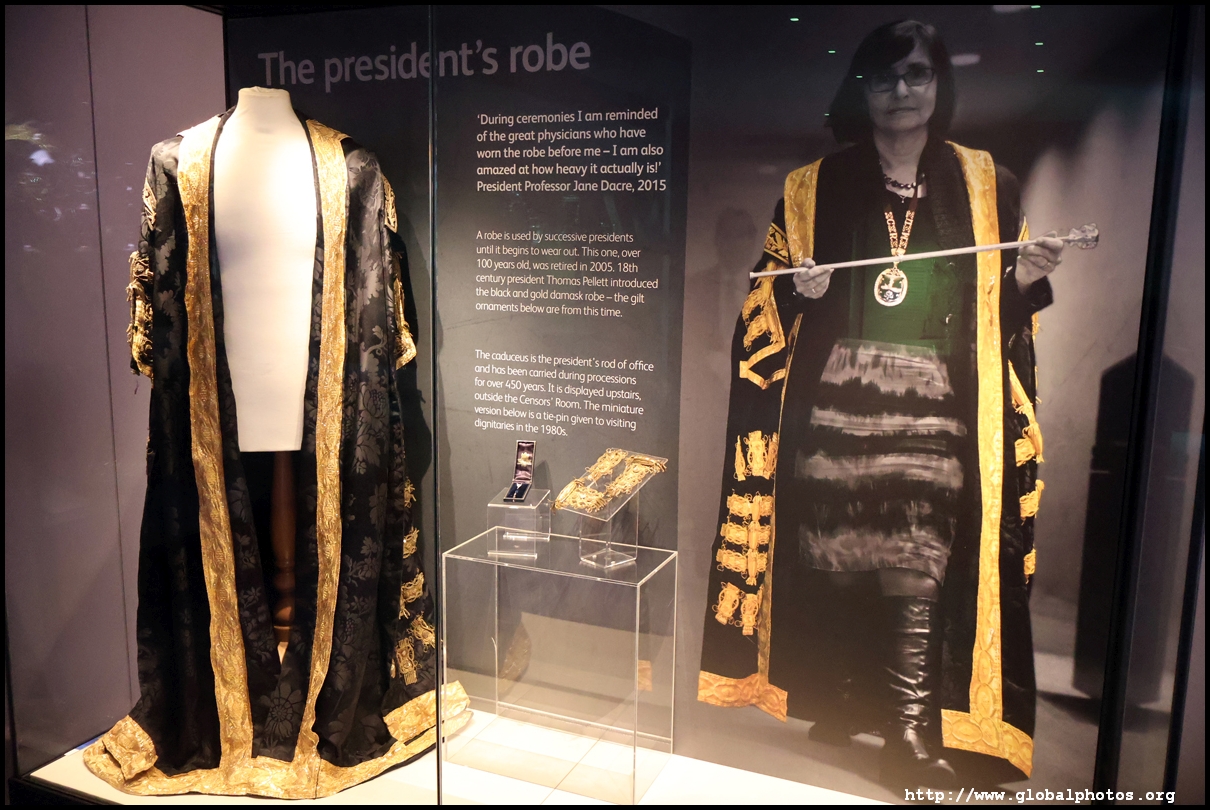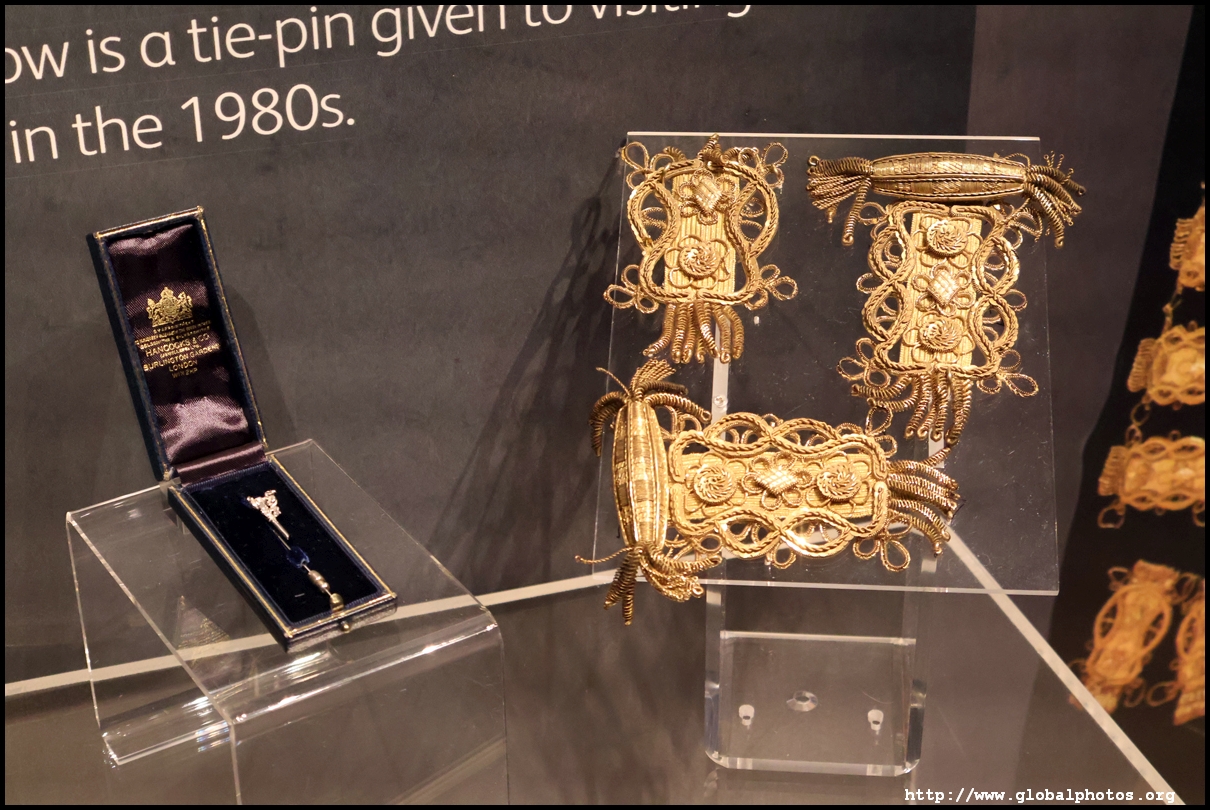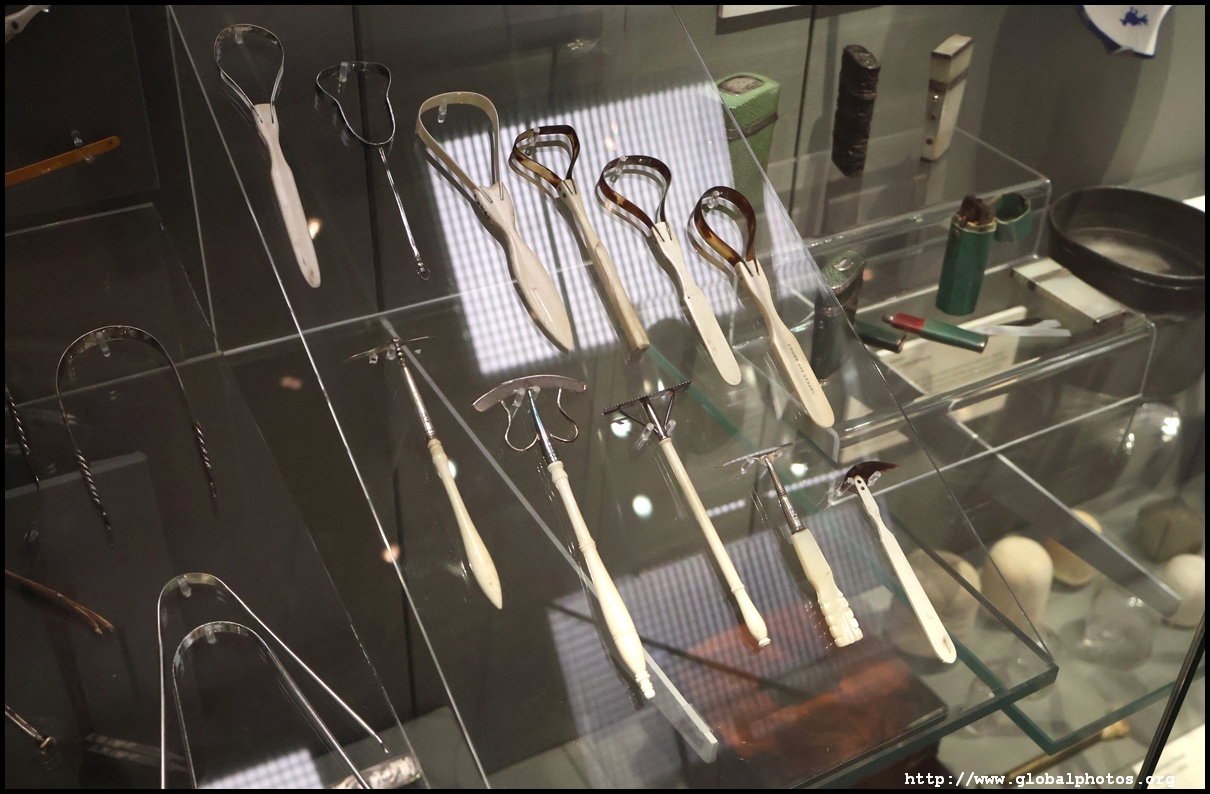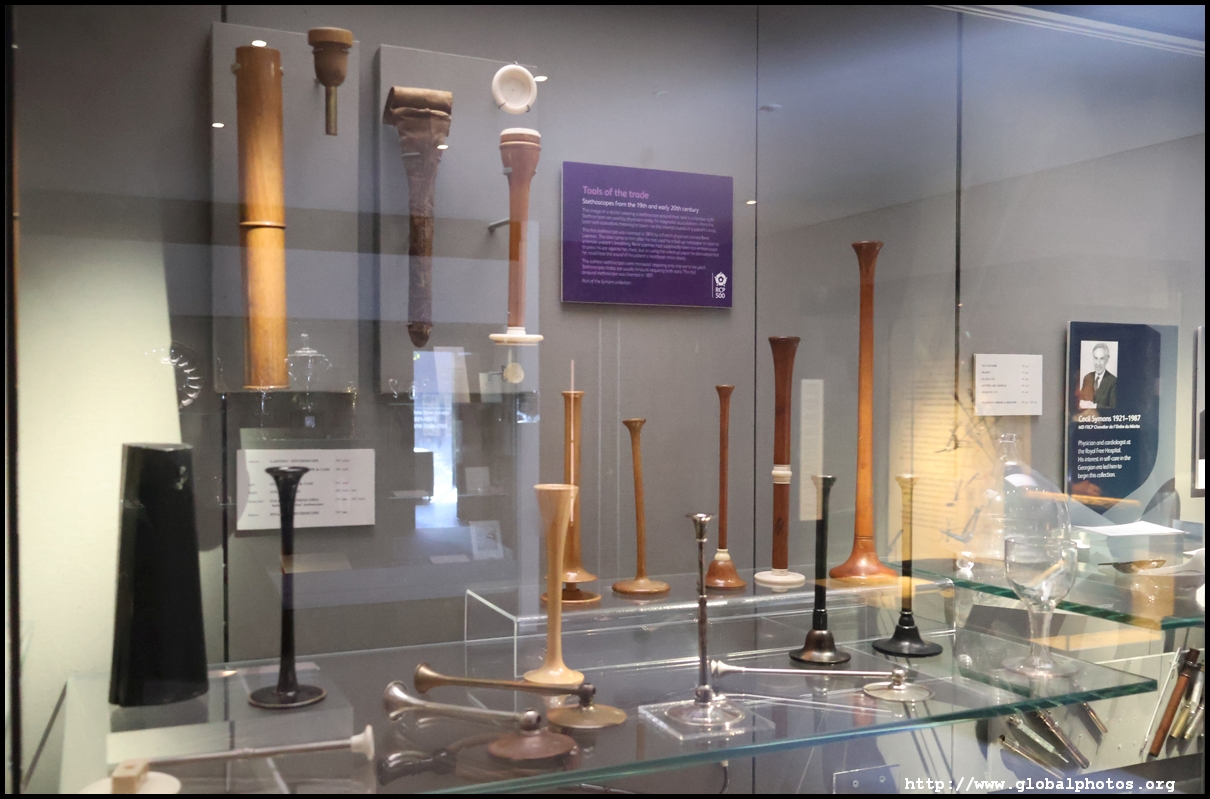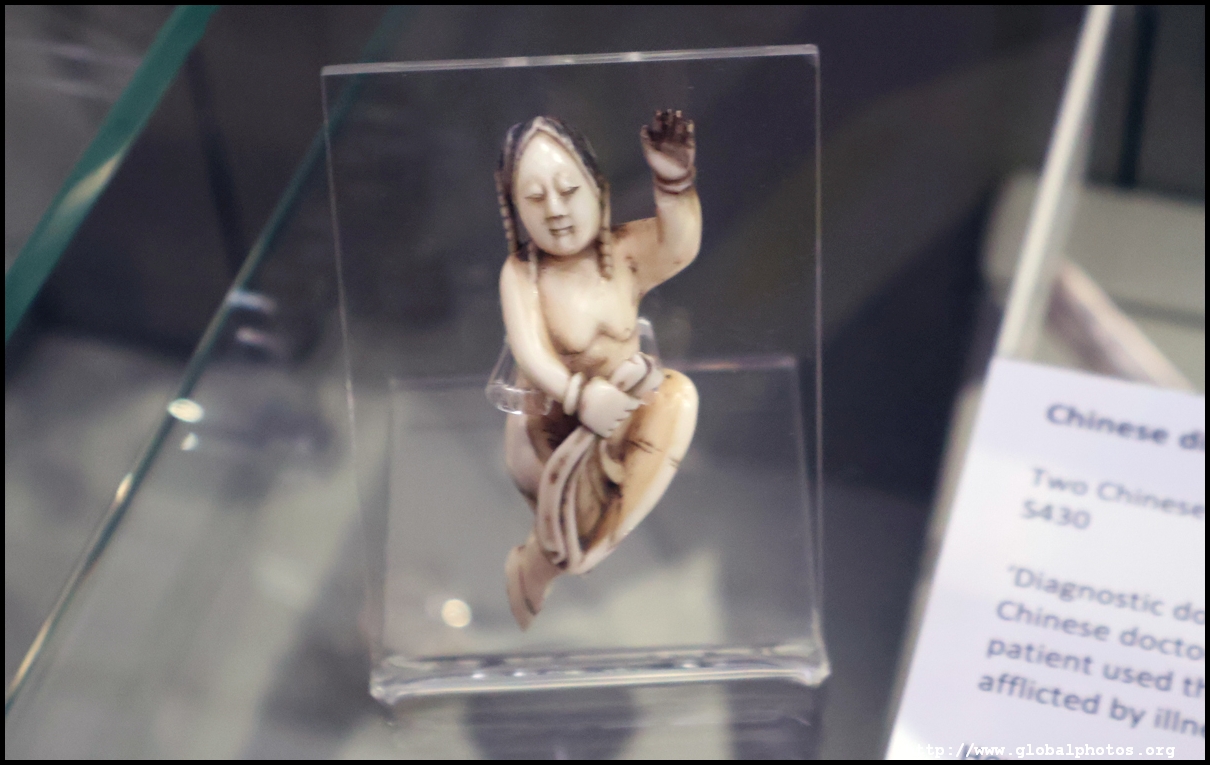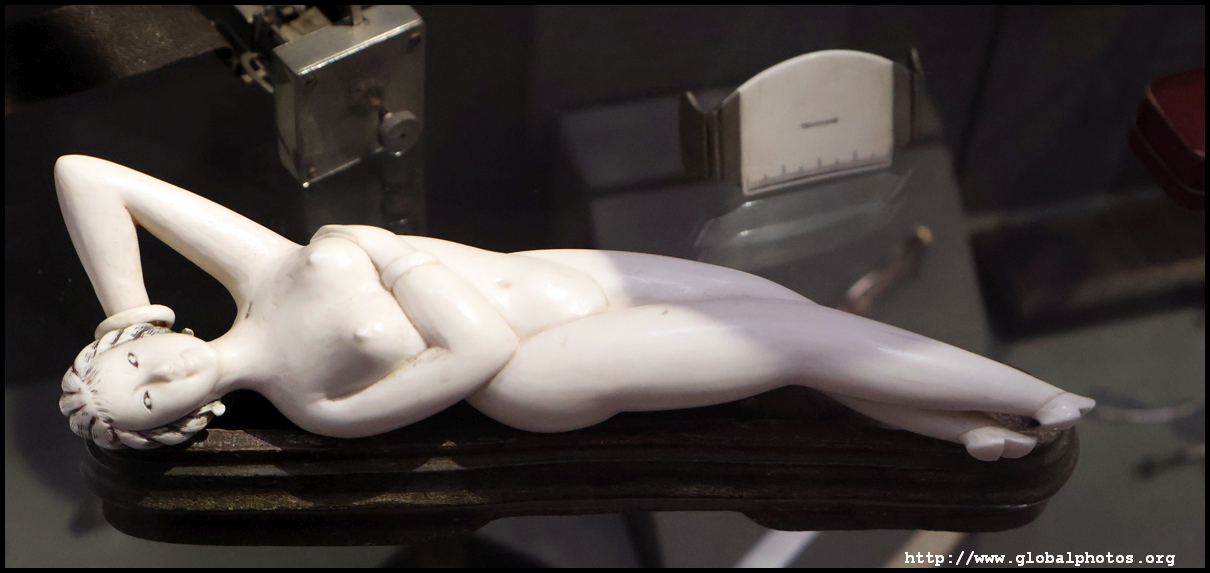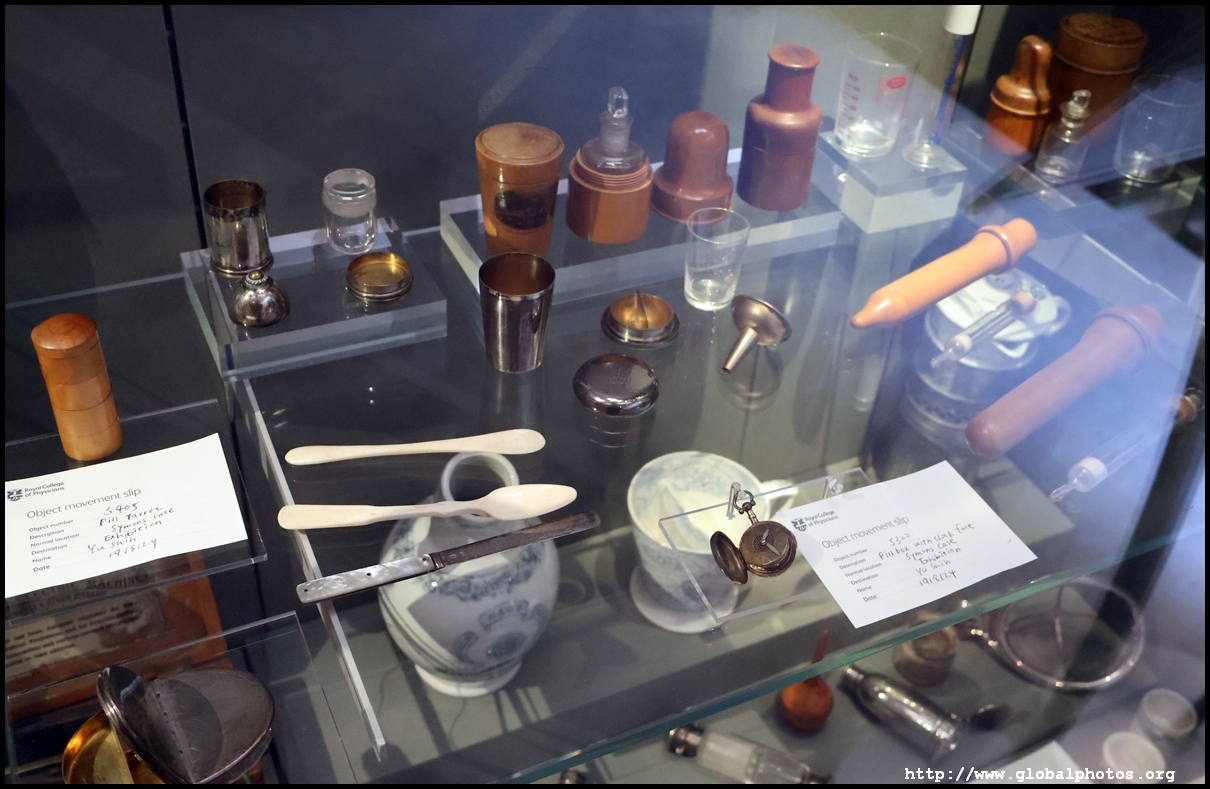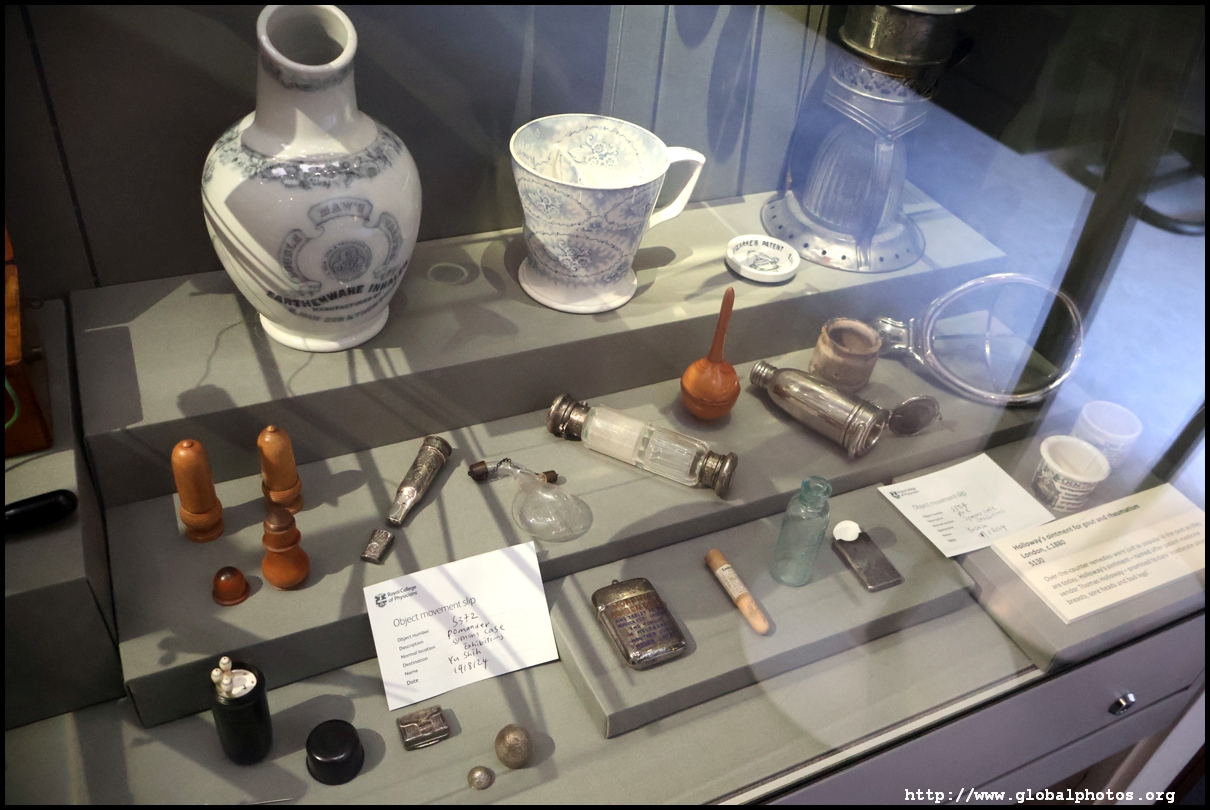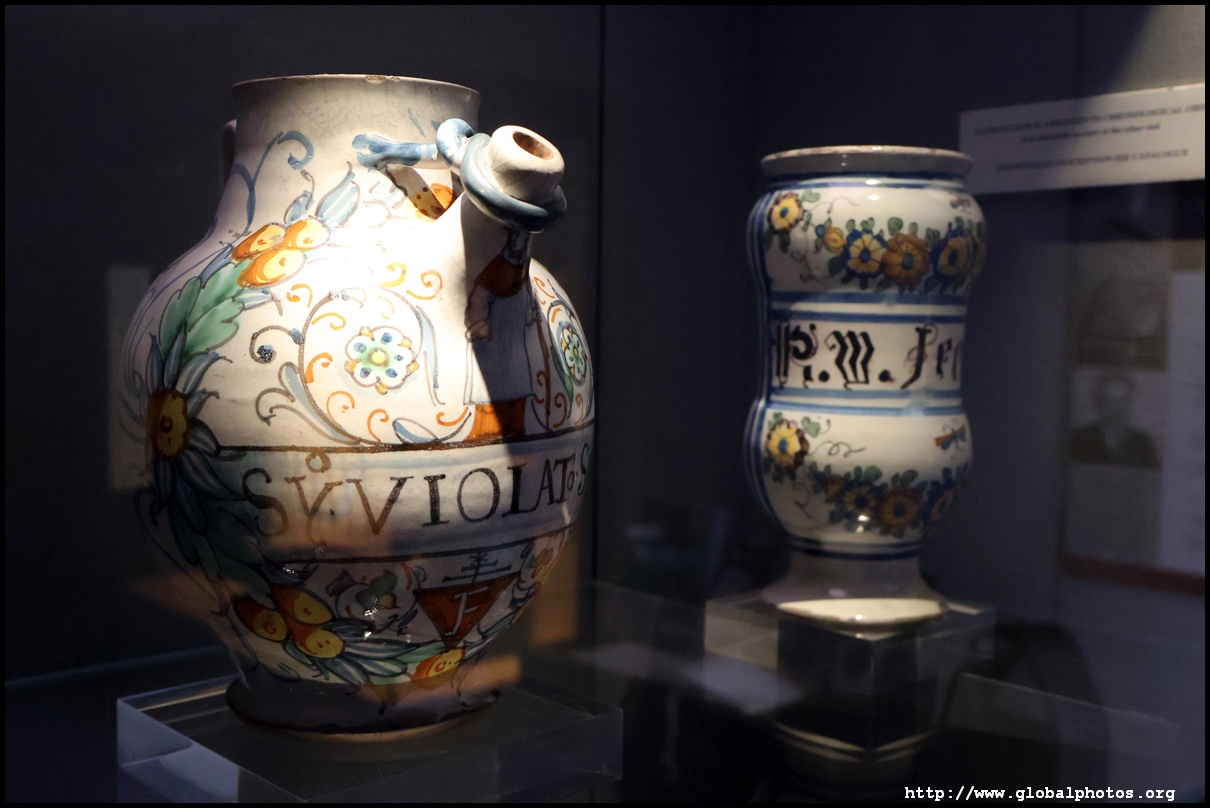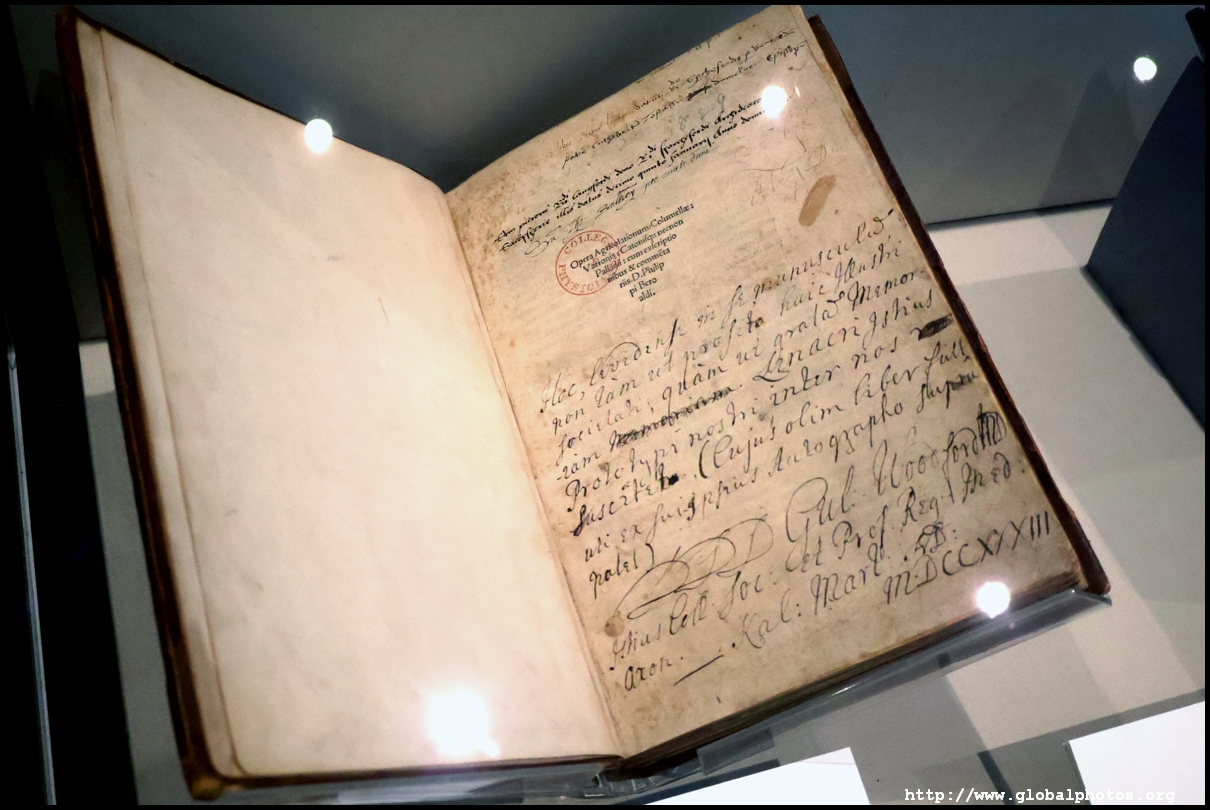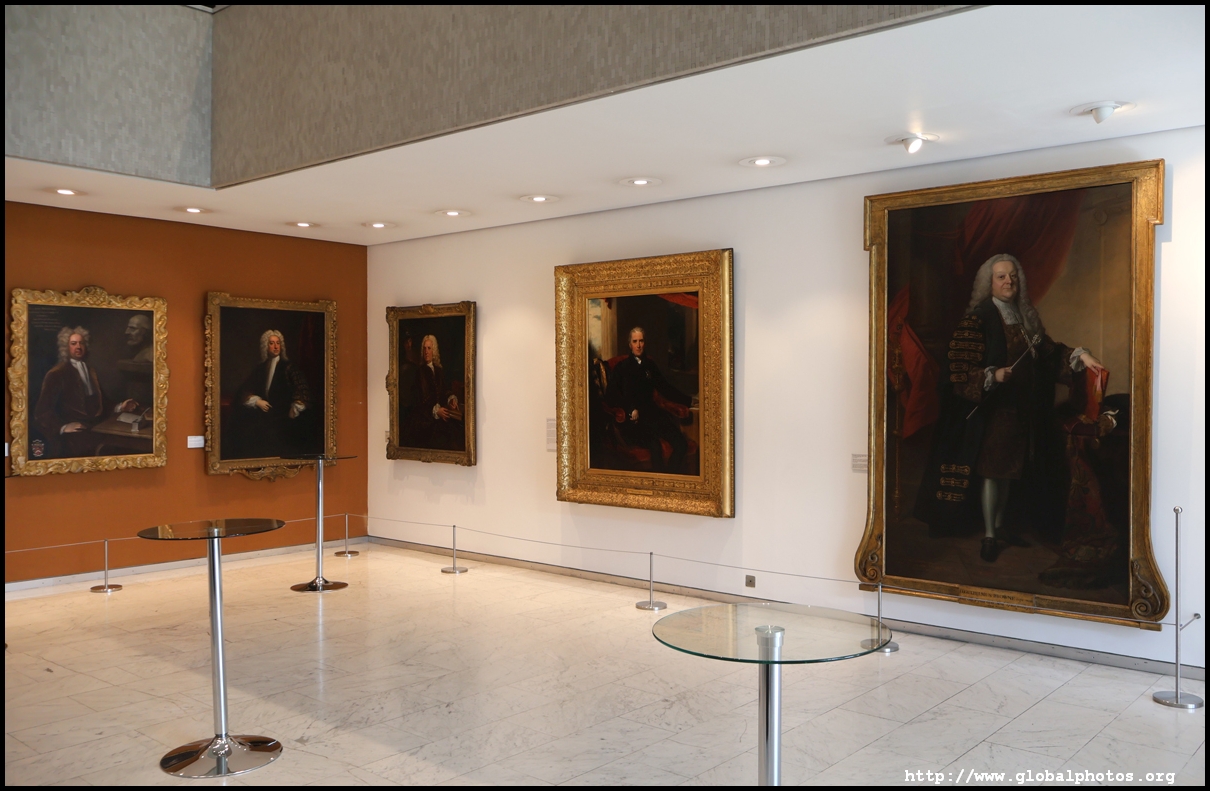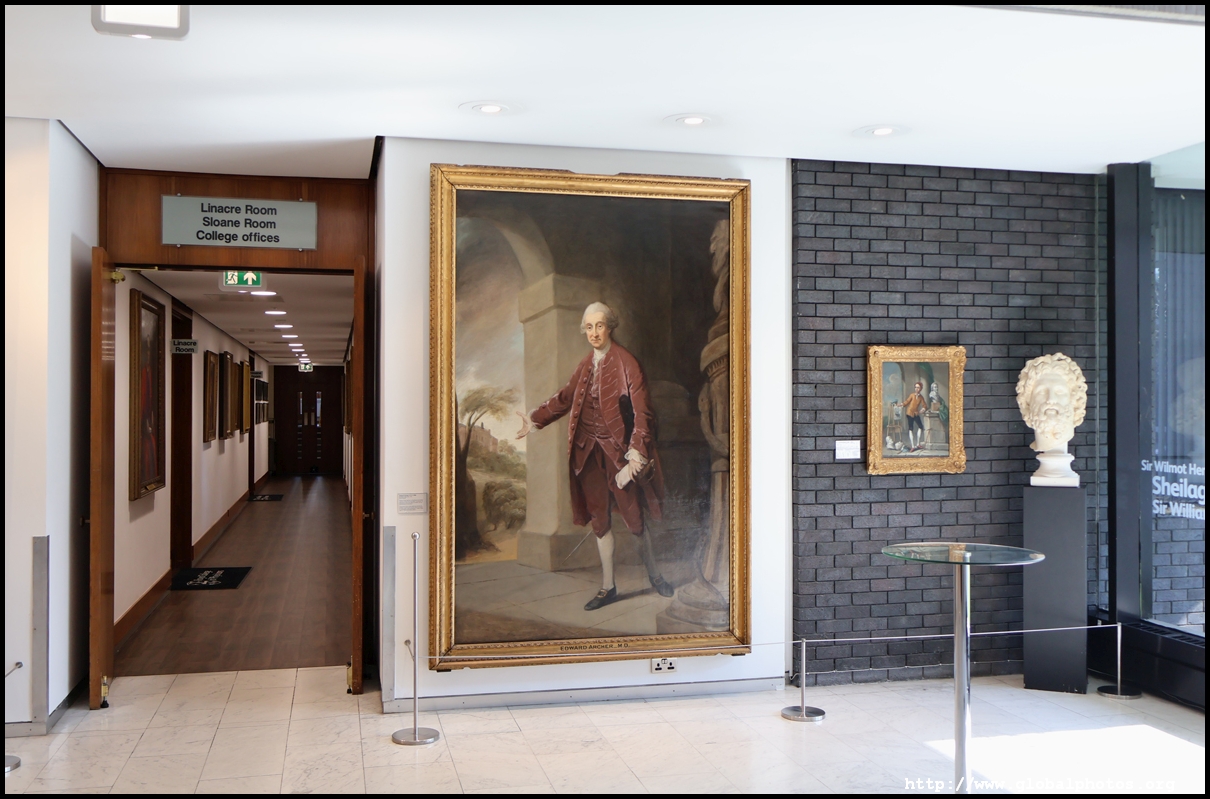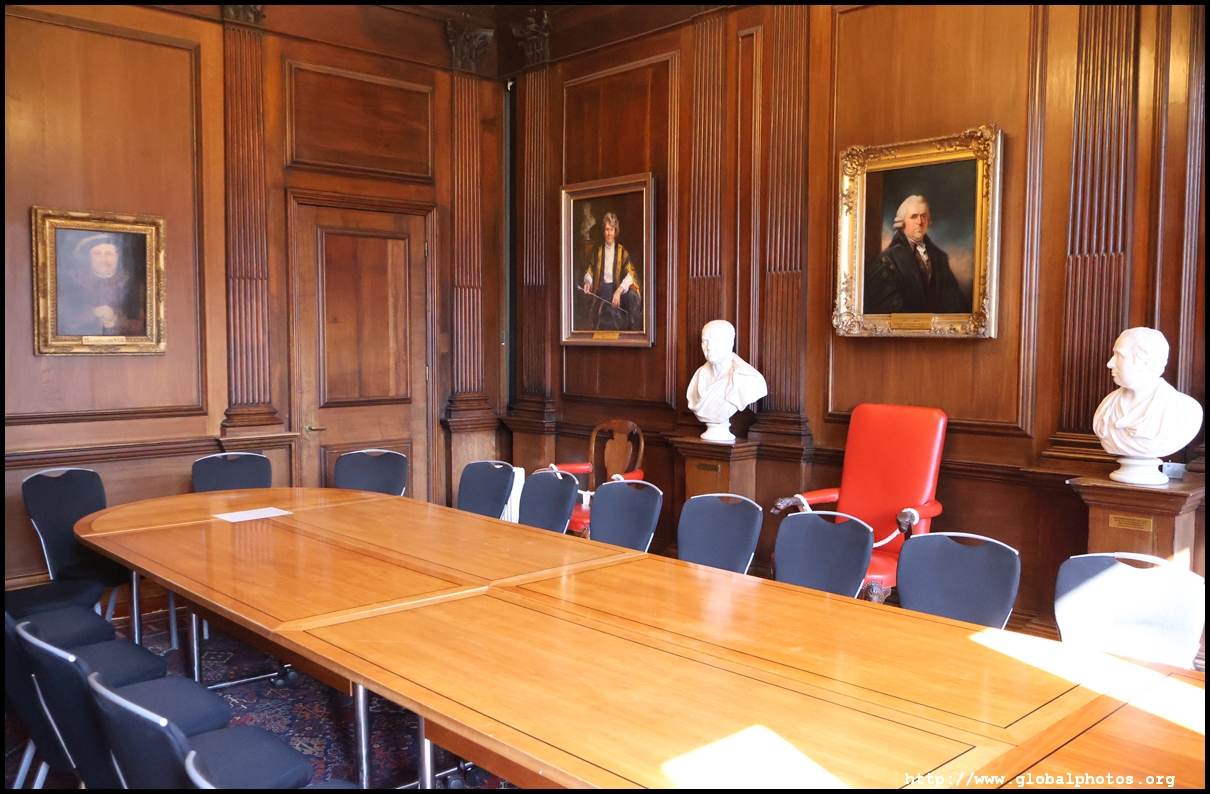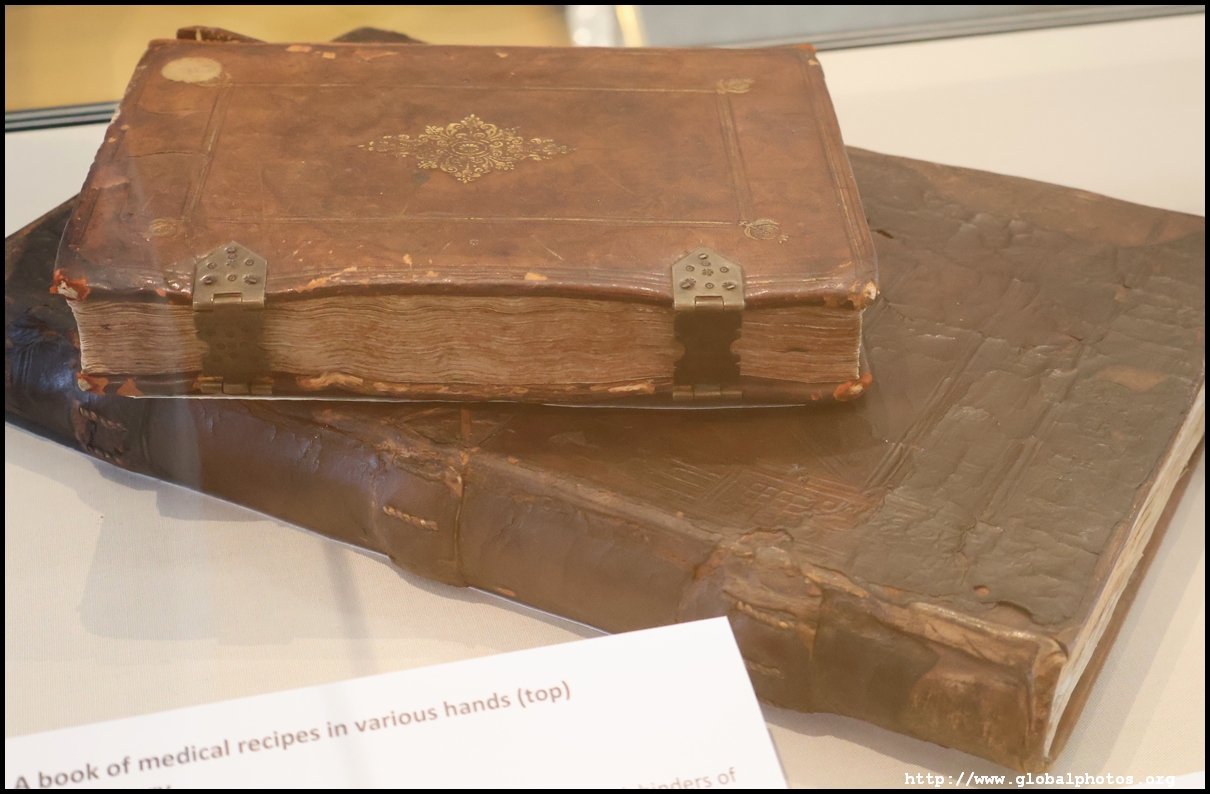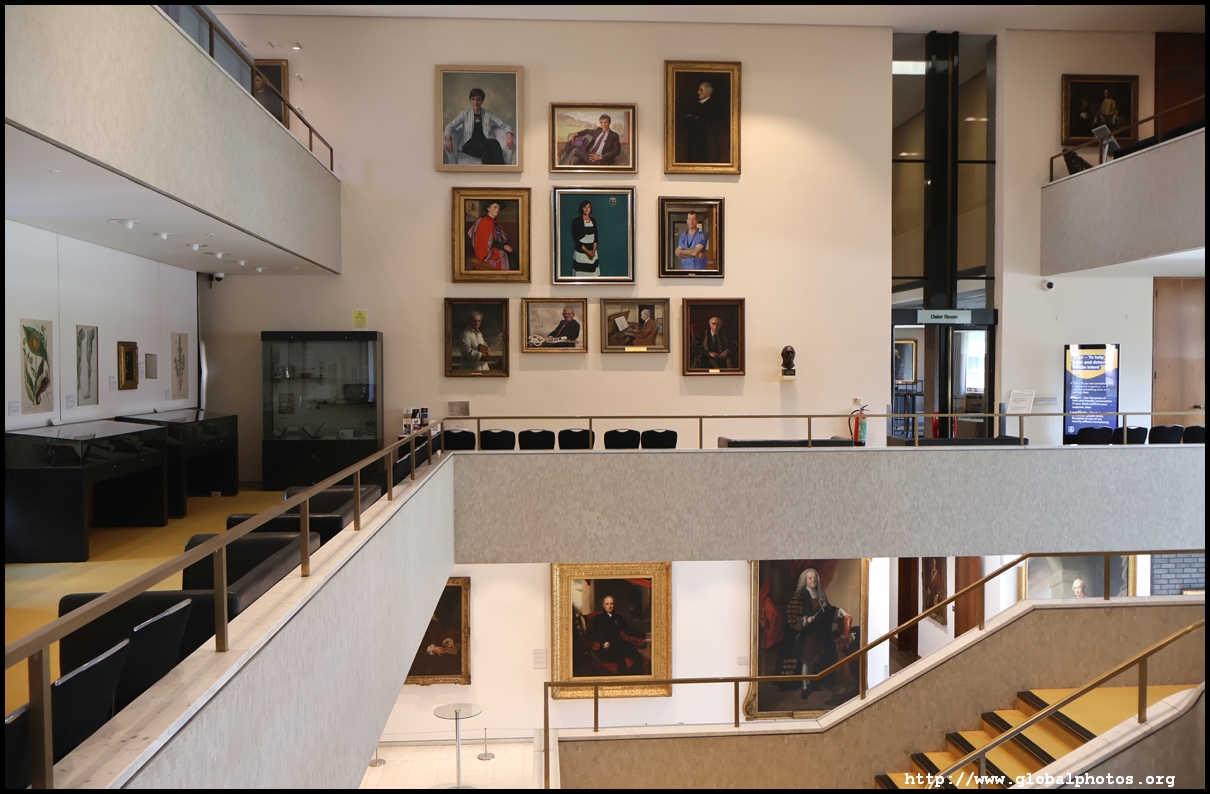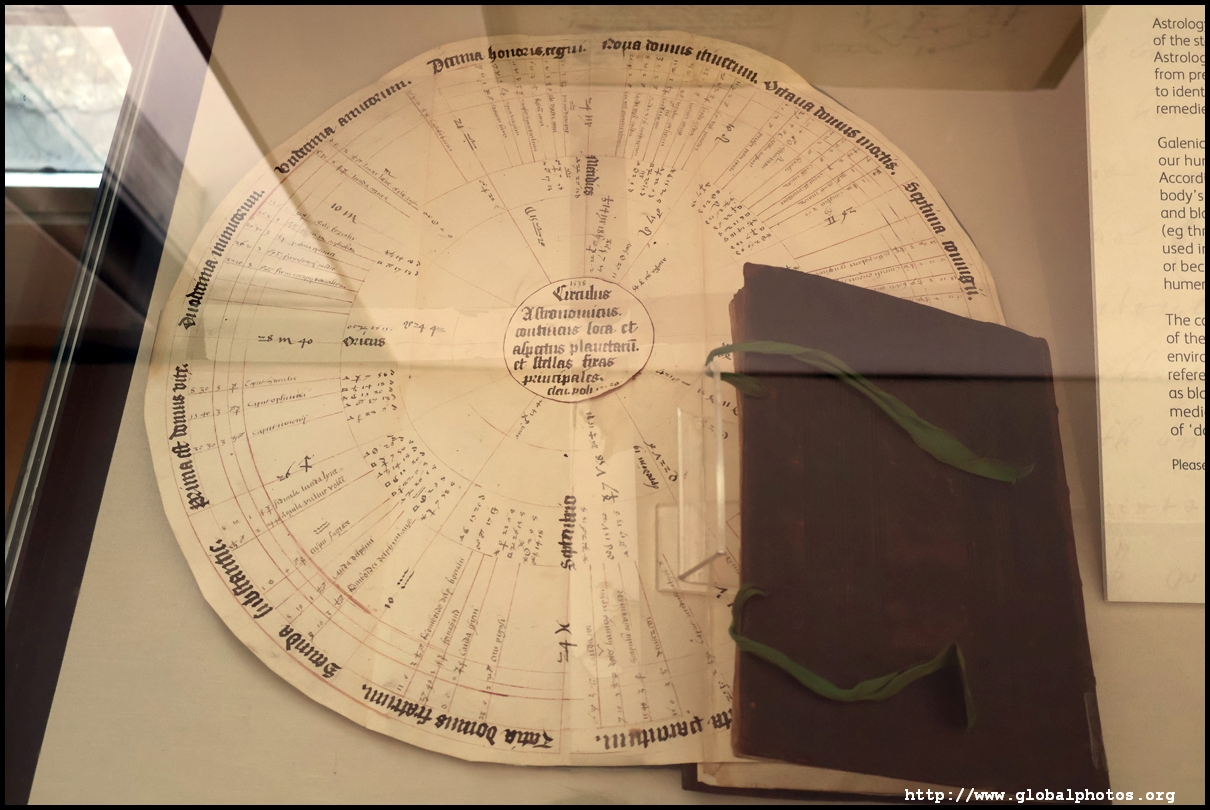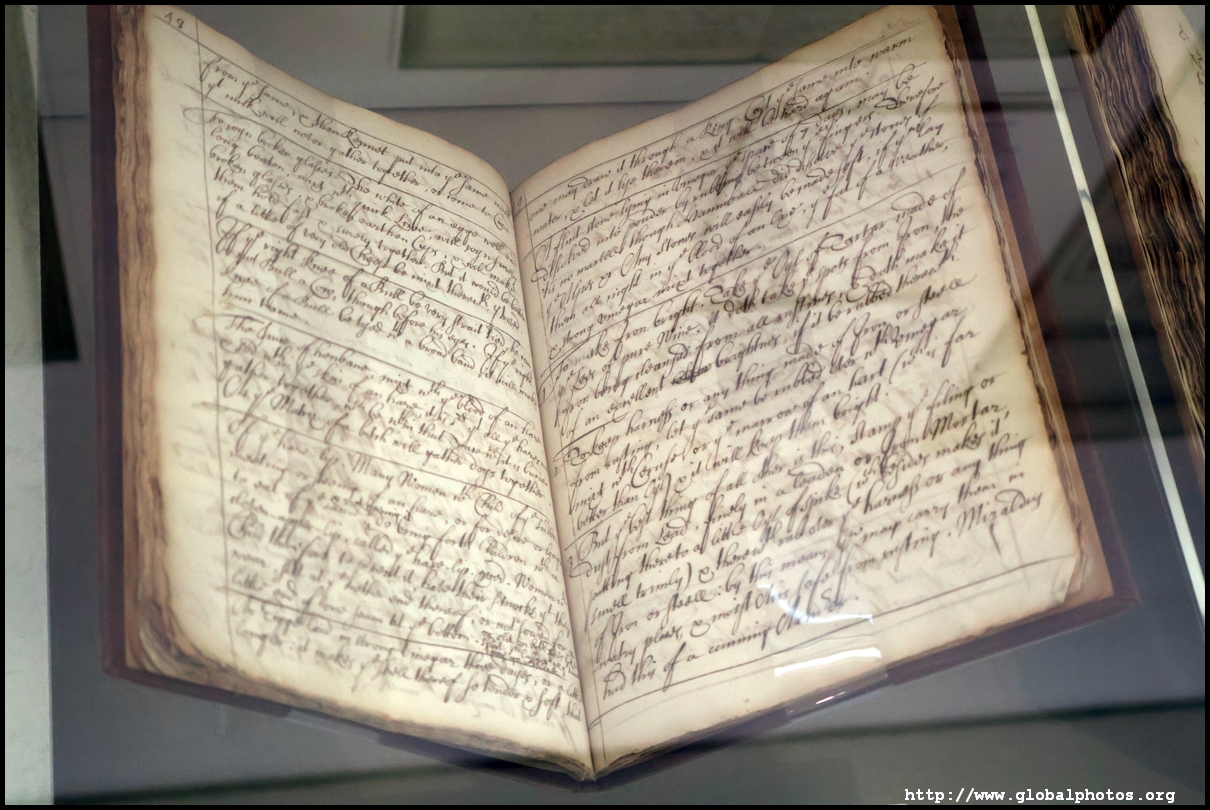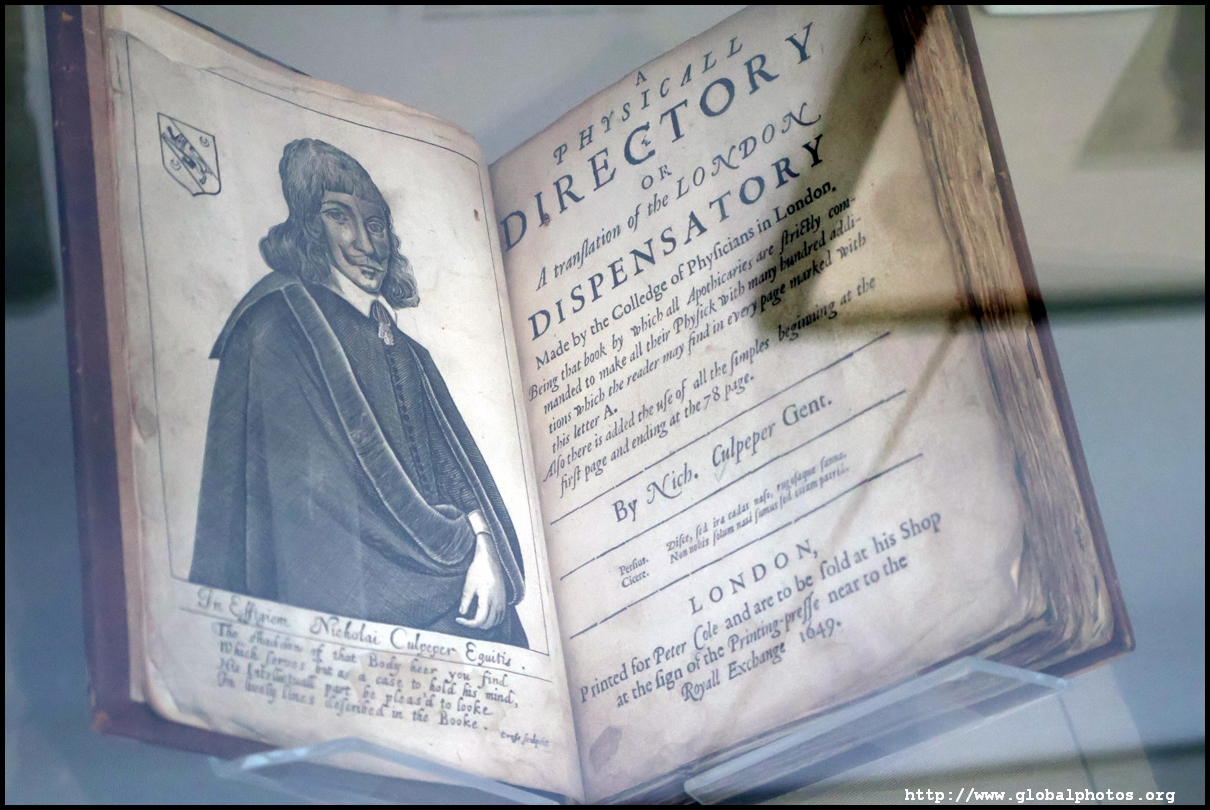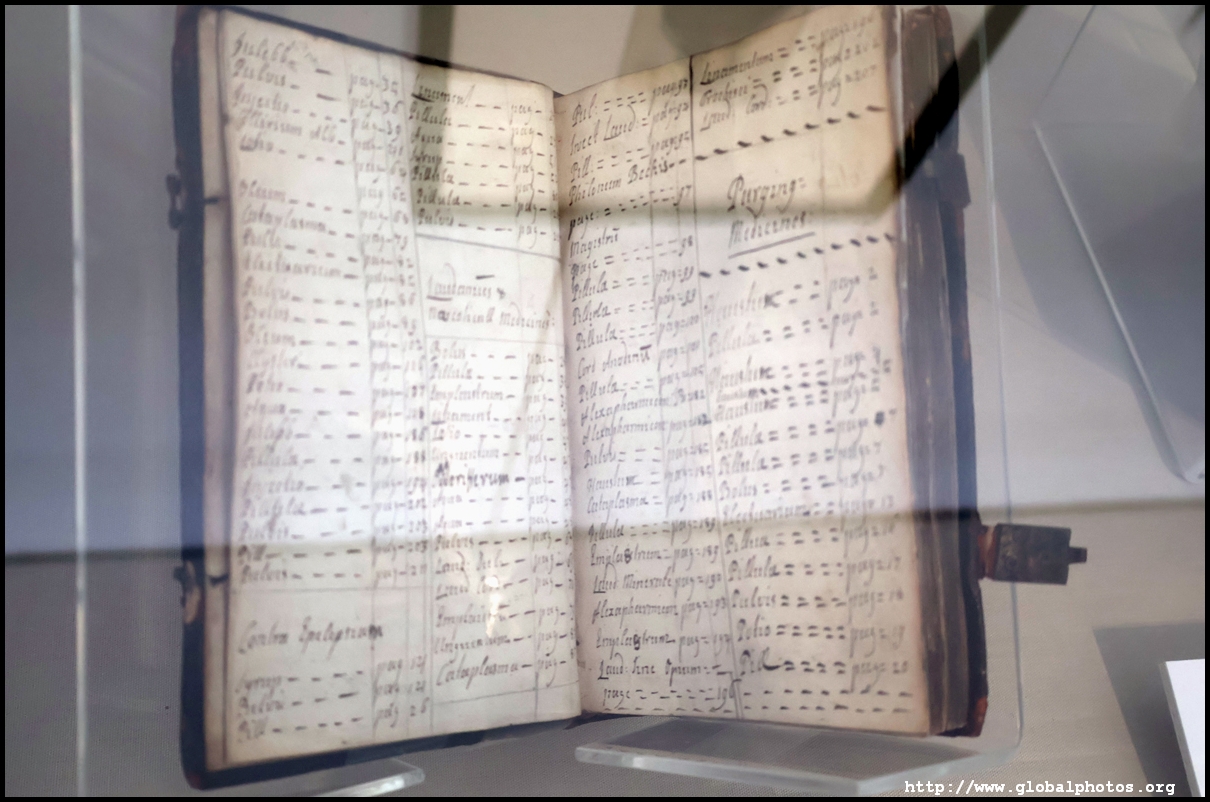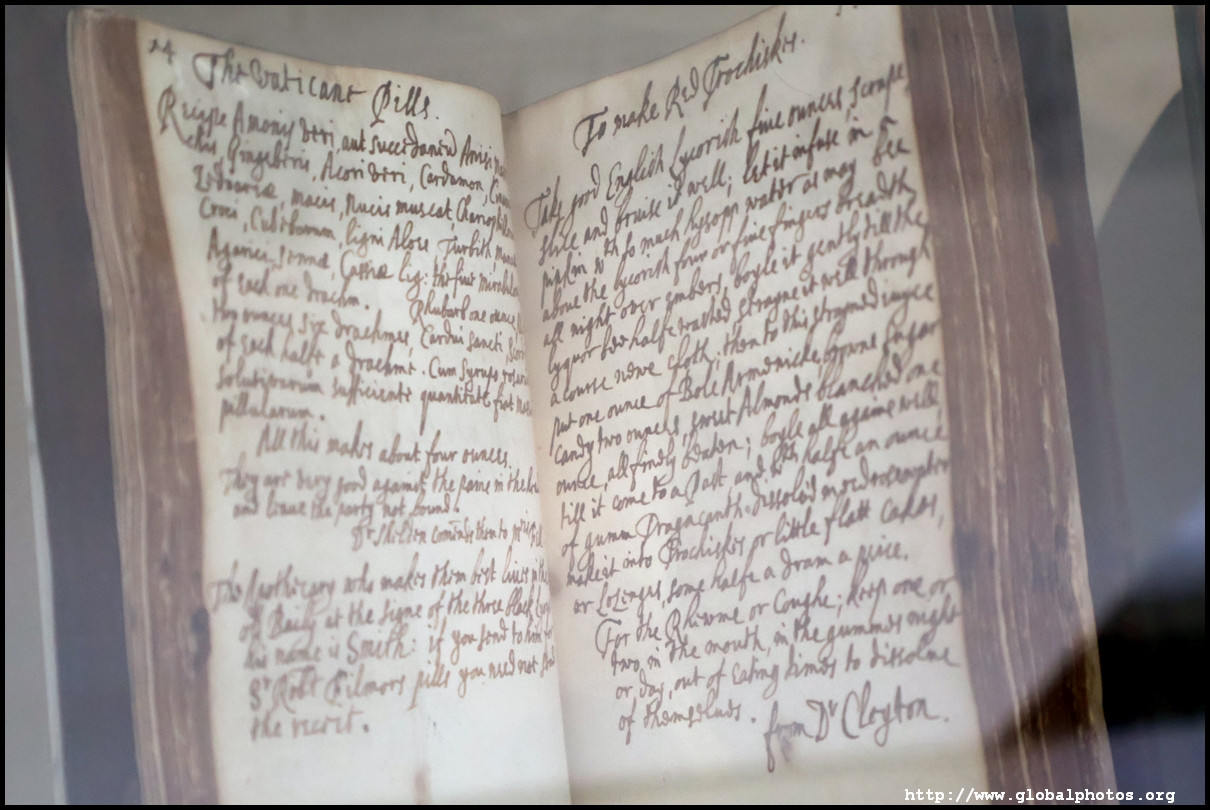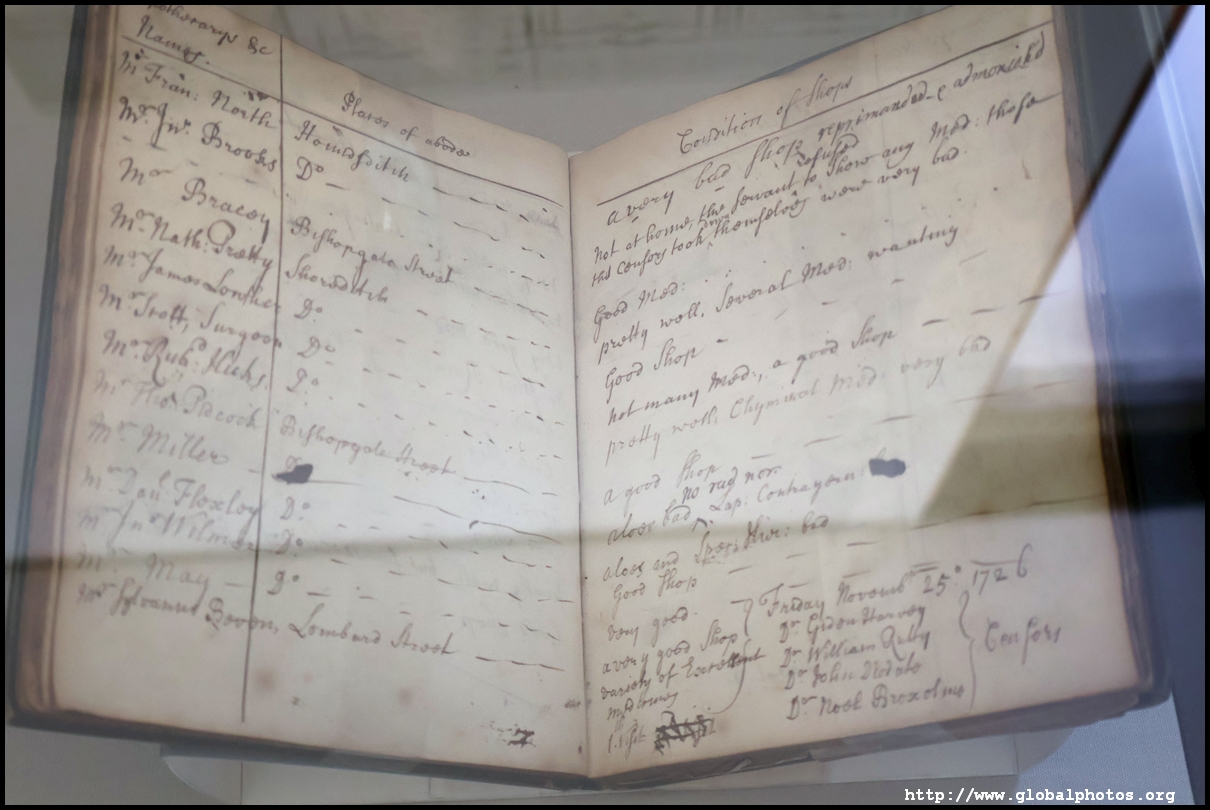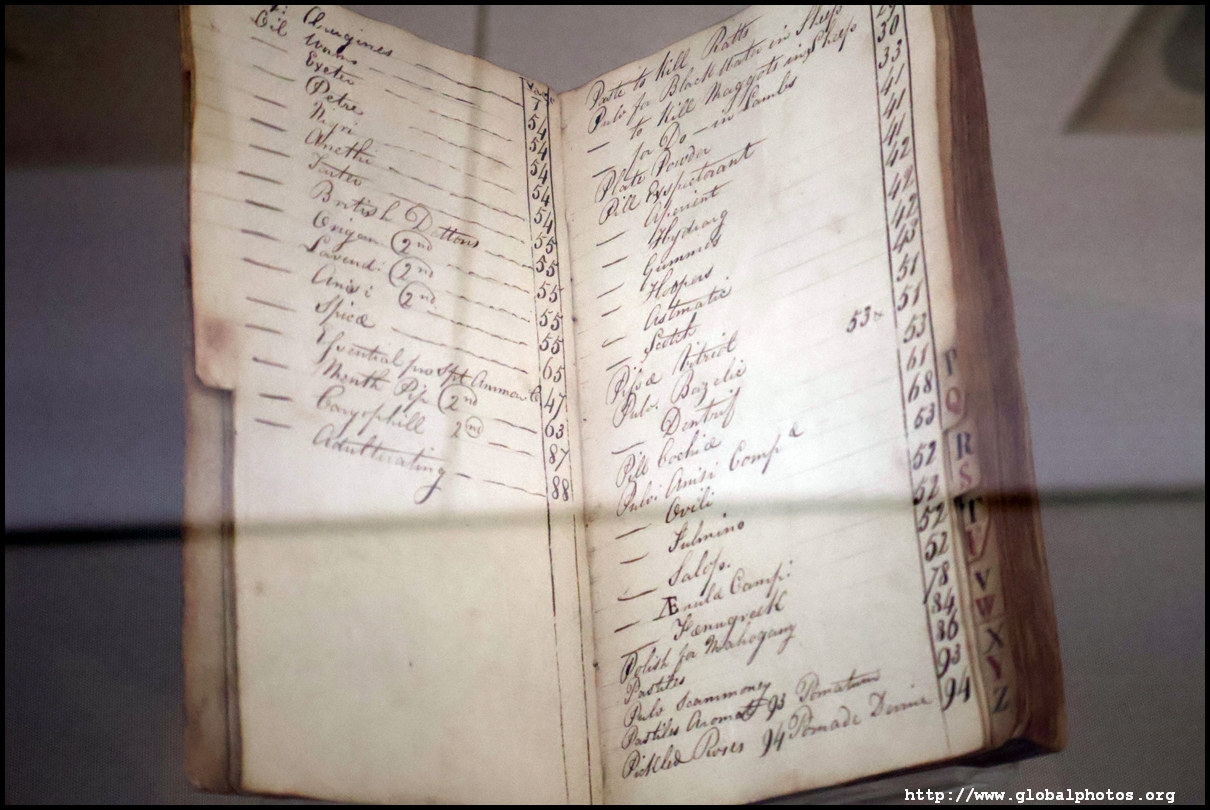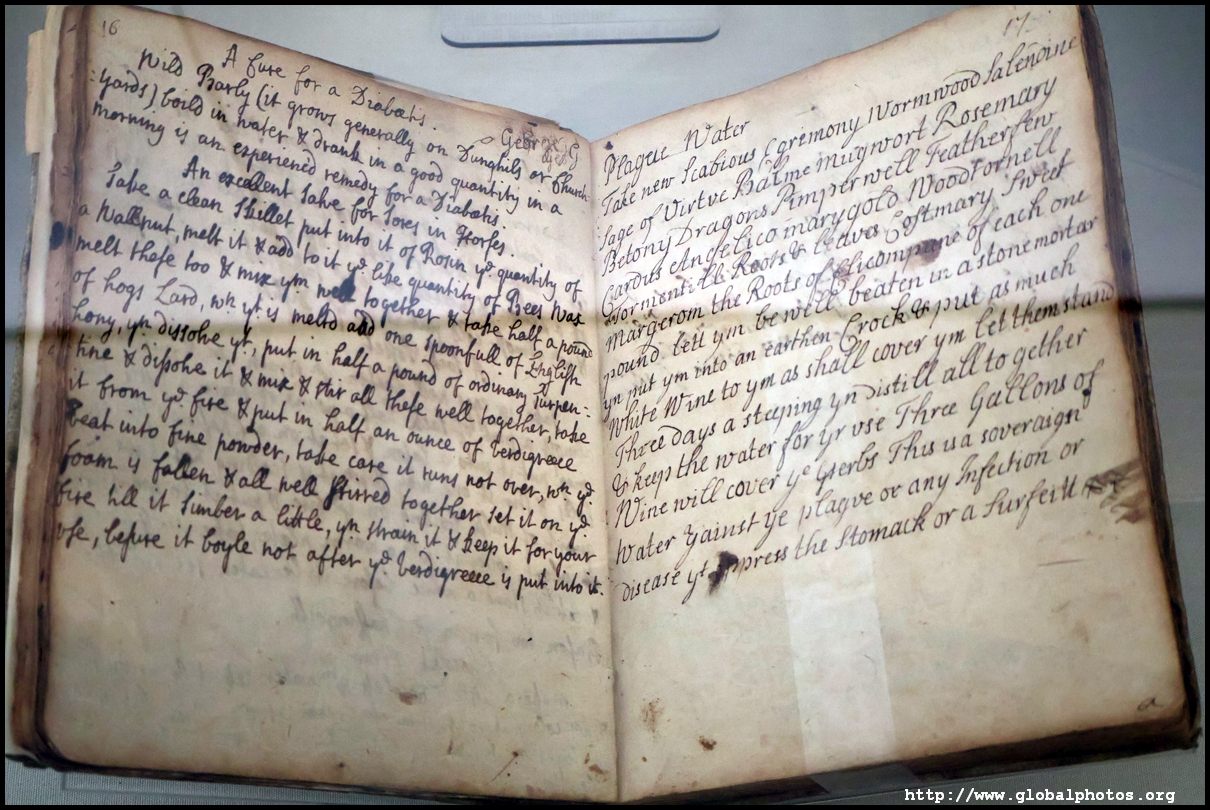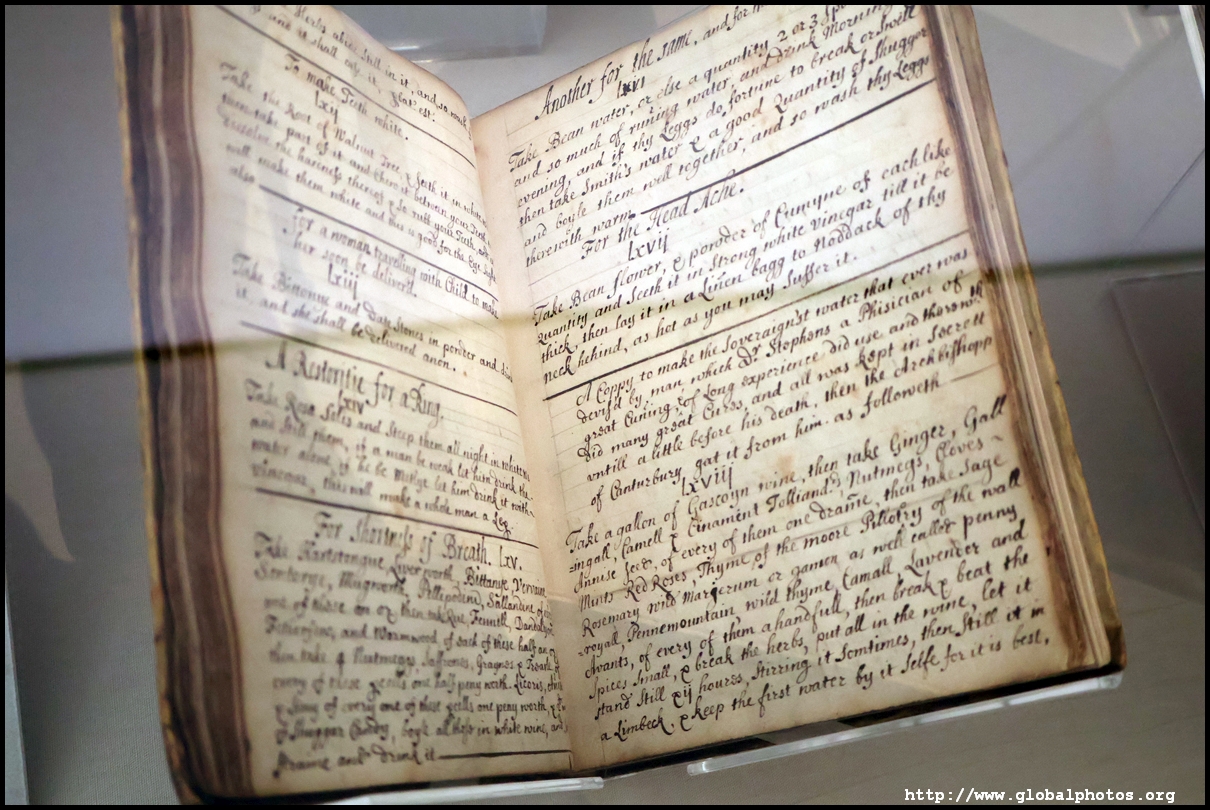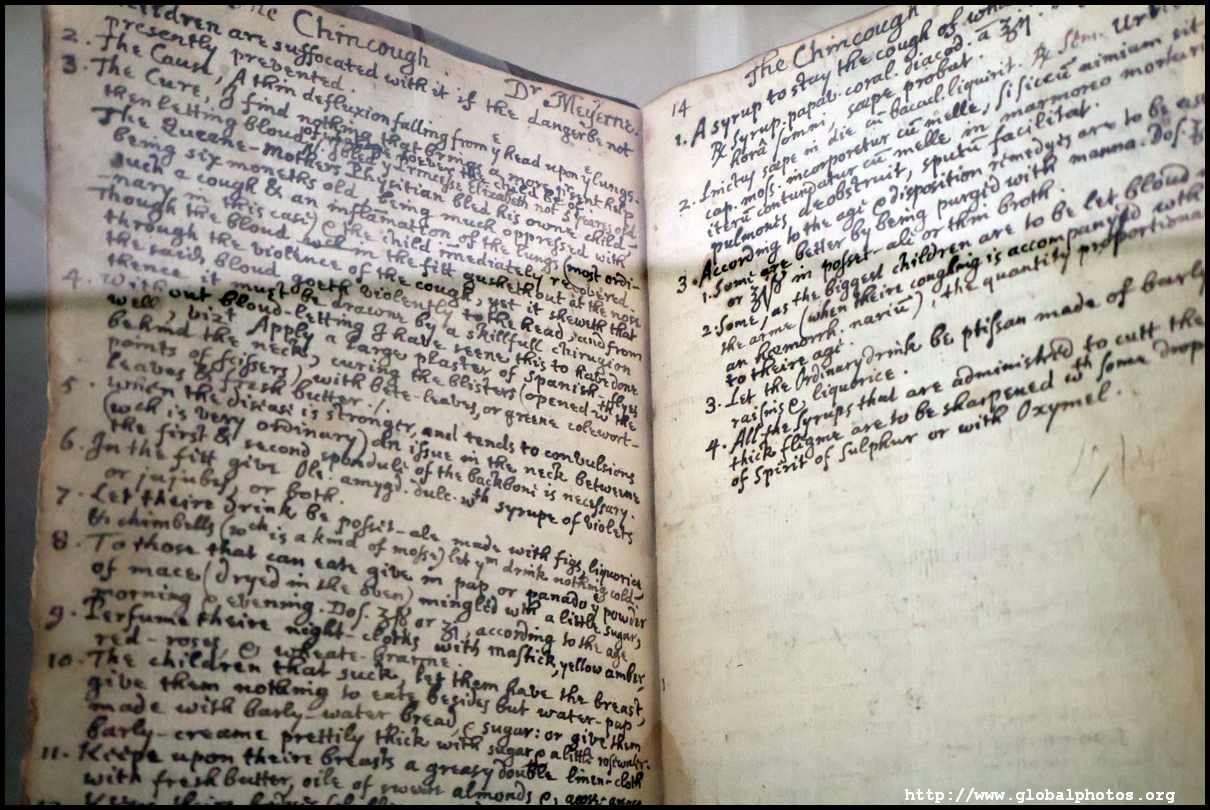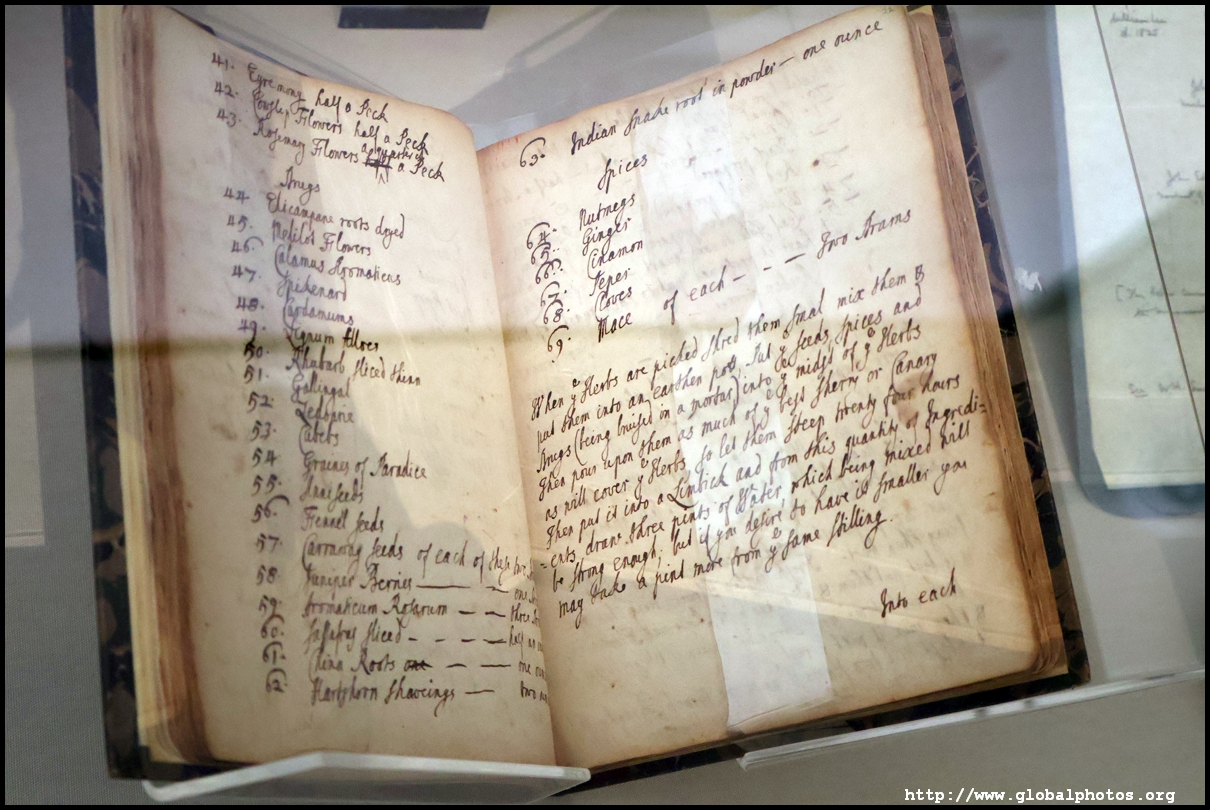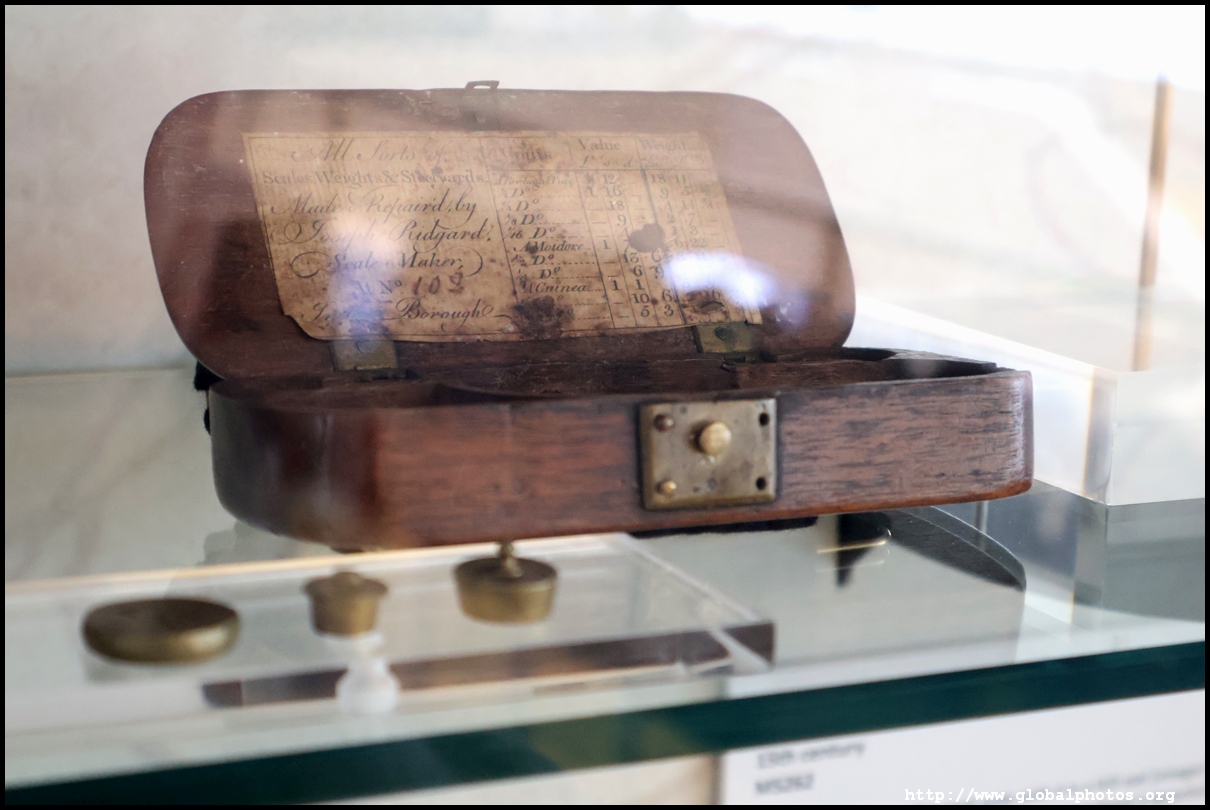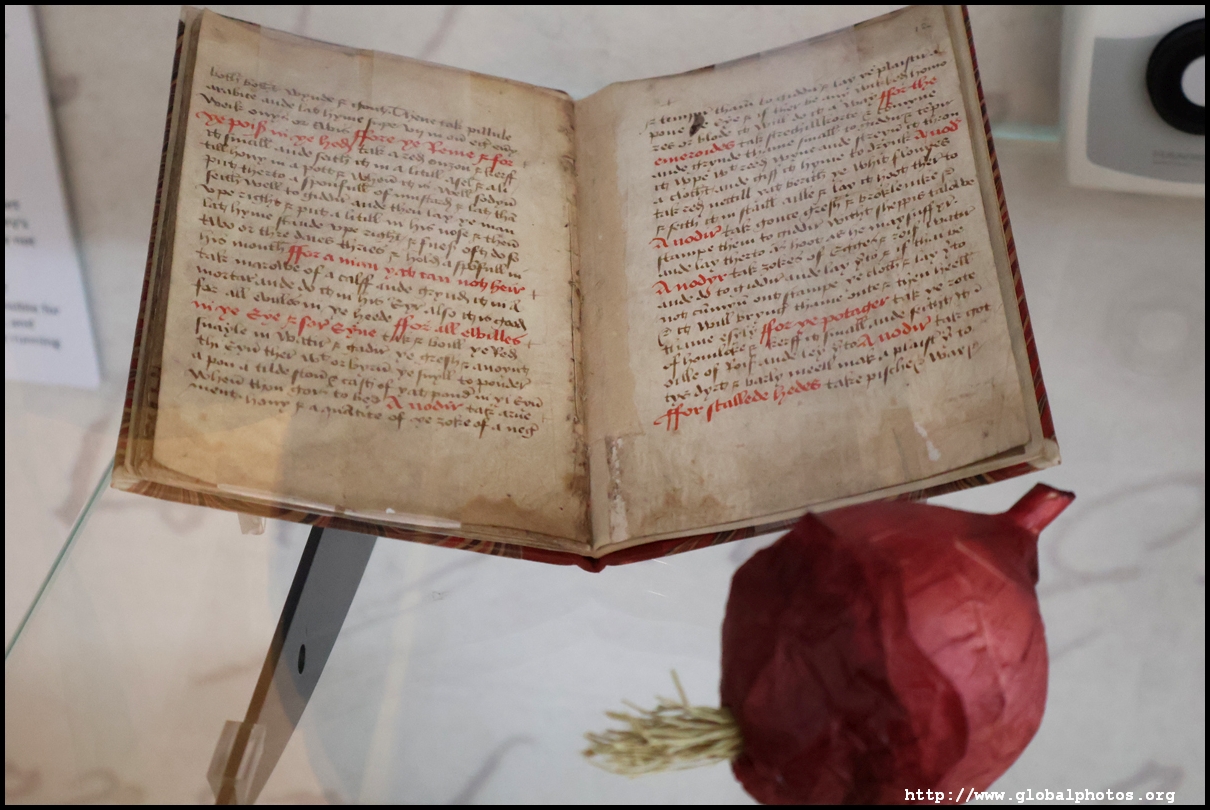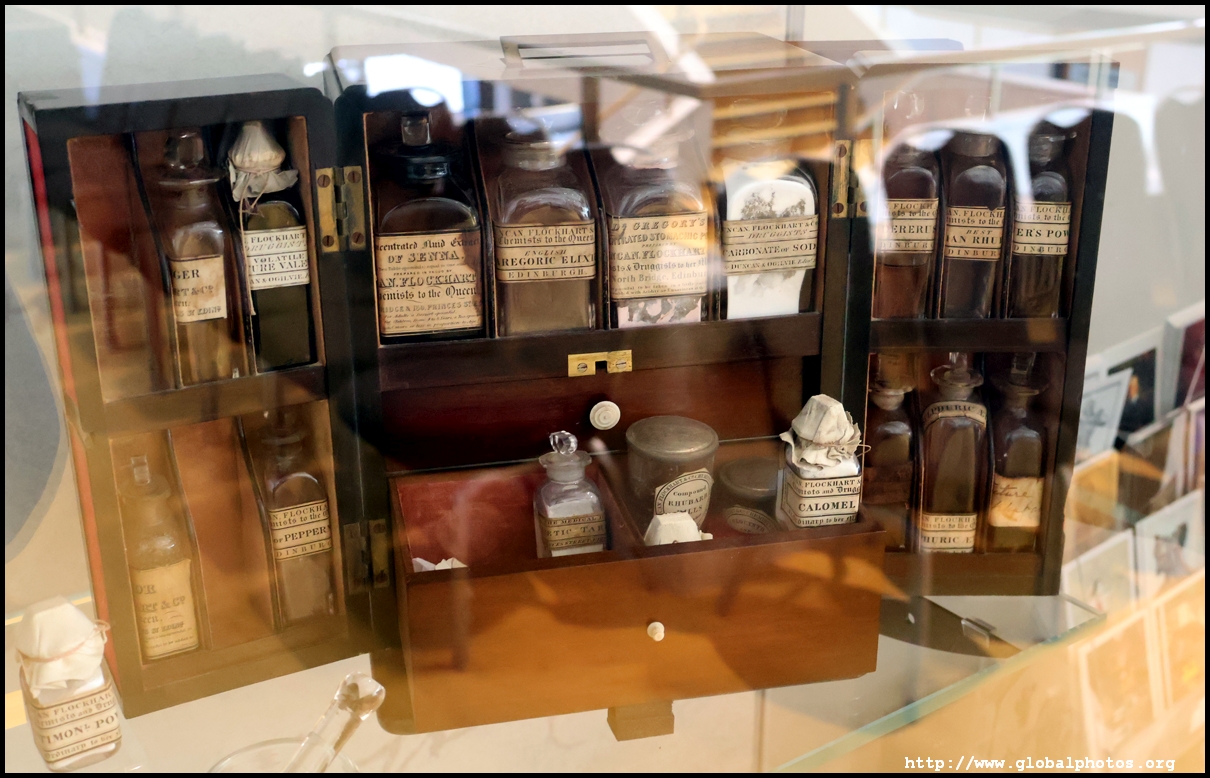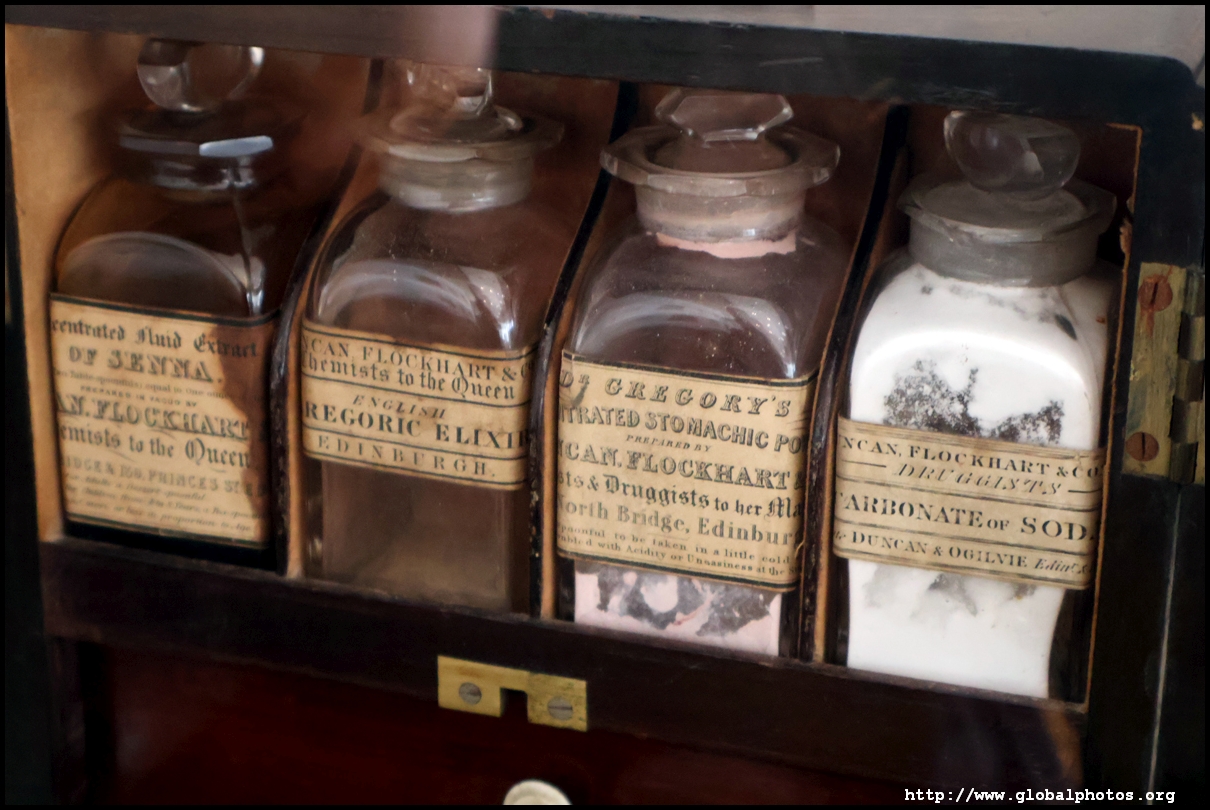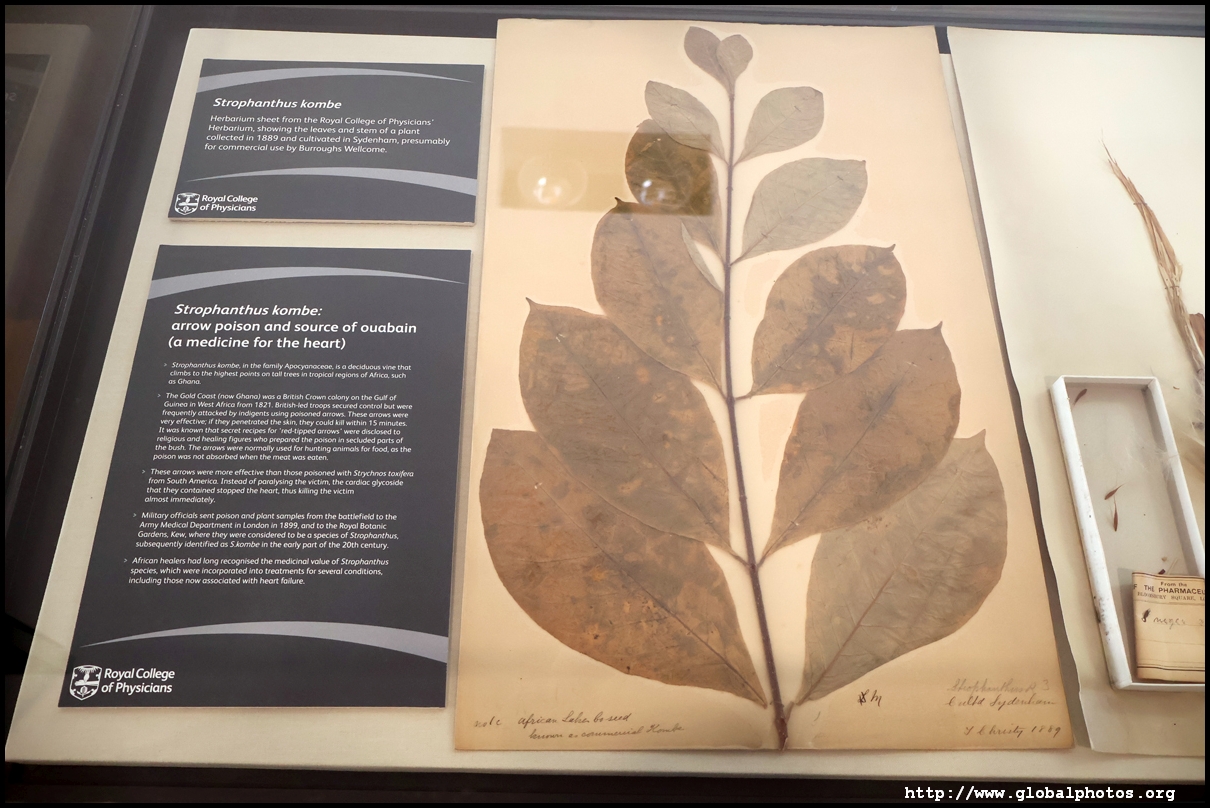London Photo Gallery - Royal College of Physicians Museum
The Royal College of Physicians (RCP) Museum just off Regent's Park showcases the history of medicine. The organization itself was founded by King Henry VIII in 1518, and at its headquarters are exhibitions spread across several floors. Calling home at various sites around London over the centuries, the present building opened in 1964 as its 5th headquarters.I started my visit at the lower level where many 17th and 18th century apothecary jars are displayed in glass cases. These tin-glazed jars were used to store medicines and their ingredients. The contents were written in Latin and the jars were made to look attractive with hand-painted designs in order to impress fellow doctors and customers. They are part of Professor Victor Hoffbrand's collection of English delftware apothecary jars, the largest privately-owned collection in the country. There are also a number of medical tools on display, including the Purjean chest, named after the College of Physicians' president from 1650-4. At the time, military medicine had advanced greatly and a chest like this was used in the field, although anaesthesia was not yet known back then. The chest on display is only partially complete with 55 out of 104 compartments having instruments, and is believed to have been modified subsequently. Below are Chinese diagnostic dolls from the 19th century, which were believed to have been tools used by Chinese doctors to indicate the area affected by illness or experiencing symptoms. However, these dolls mainly exist outside of China, fuelling speculation they were not medically-related, and their erotic poses may indicate an exotic representation of the country for Europeans. On the right is a book on agriculture published in Italy in 1496. It passed through many owners, which was documented in the notes, and ultimately reached the RCP in 1733. The building is a functioning facility although it is possible to enter the various rooms to explore if they are not in use. Heading upstairs, there are a lot of historic documents on display. Recipe books documented women's knowledge in managing the household, sharing unofficial medical information based on experience, word of mouth, or local healers. While the rich could access medical textbooks and pay for doctors, the poor relied on these books for their everyday needs. On the left is a recipe for plague water using 18 sweet smelling herbs to combat the "bad air" thought to transmit the disease. On the top floor are anatomical tables from the University of Padua. Dating from the 1650s, these tables show dissected bodies that are arranged on varnished wood panels. It is believed they were used as teaching aids for students or experiments in how to preserve human tissue. We may never know who the people on these tables are. They may have been executed criminals or from the adjoining hospital. They are quite graphic and out of respect, I didn't take any photos. |
To re-use these photos, please notify me by email : asiaglobe@yahoo.com.hk.
